Guyana – Find Yourself and Uncover Deep Connections
A few days prior to departing for this latest trip to Guyana, my daughter asked me, “Daddy, what are you looking forward to the most about your trip?” It was a tough question. My response was likely hard for her to understand but I told her that I was looking forward to losing my sense of time. Yeah – kinda heady for an 11-year-old to process but it was an honest response.
What follows will be some of the strands that swam through the ol’ duders head whilst in the jungle. If you’re looking for a detailed play-by-play of the trip, I’m sorry, that’s not gonna happen. Things like tackle selection for the trip, what happened when we were there, and other “how-to” kind of content are best discussed over a call. Also, I covered issues like these in my trip reports from my first 2 visits. Tap these links for more info – Guyana Trip 1, Guyana Trip 2
Now, having spent almost 2 months of my life in the Guyanese jungle, my time there is more ethereal than anything else. I spend most of my consciousness there thinking, observing, connecting to my surroundings, and bonding with our guides (whom I consider my friends – not guides – closer to mentors). If I have any expectations at all, it’s to lose my sense of self and to challenge most of what I believe to be important in the WEIRD (Western, Educated, Industrialized, Rich, and Democratic) society in which I live.
Don’t worry – I’m only going to focus on a few questions in this piece. I’m aware that few if any readers care about what was going through my head. However, it’s important to me to be very clear that these trips to the jungle aren’t about the fishing. Stated a little differently – I’ve spent enough time in the jungle to know that it’s a bountiful paradise for anglers, so I’m not concerned about trophy hunting. Gorgeous specimens of all the target species always emerge. Here it goes.
What Does it Mean to be Healthy – WEIRD vs the Amerindians of Guyana?
My Amerindian friends are hunter-gatherers. All their time is spent outdoors. They operate at the pace of the natural world that surrounds them. They fish and hunt when their quarry is active, and they rest and have fun with their friends and family the rest of the time. Nearly their entire diet comes from the jungle (missionaries introduced flour years ago – and I’m not sure that’s a good thing). They aren’t muscular but are amazing strong (I watched Flavian, a young Amerindian, easily 30lbs lighter than me, hack a path through dense brush while standing on the bow of our boat – with one hand. I tried to mimic him and didn’t come close). They see, smell, and hear things we don’t. Their skin seems impervious to bug bites and cuts. They walk barefoot and are incredibly agile. They can drink water and eat foods that would debilitate us WEIRD folk for days. Oh yeah, their life expectancy is as long as ours too.
I could keep going but in summery – there’s a lot to learn from them. After reading these observations, some folks might think they live a “hard life.” Maybe – but here’s one last point – they are BY FAR the happiest people I’ve ever met. Smiles, laughs, and happy chatter abound. It’s so refreshing.
In the WEIRD world, we go to the gym, take any number of vitamins, trust the science/rely on doctors/experts to tell us how to be healthy, eat processed foods and meat from industrial farms, etc. In other words, we try to engineer health and happiness and seem to keep failing – miserably. I’m not offering a solution to this problem, just asking you to recognize that it’s there and to consider the possibility that continued engineering isn’t the answer. In fact, it may be making us increasingly fragile.
Measuring Time
In the WEIRD world, we’re almost always on a schedule. Our devices keep us “on track” via reminders, alarms, scheduling events, etc. It’s commonplace to ask someone, “What time is it?” That’s not the case in the jungle.
Guyana is equatorial, so all year round there is about 12 hours of daylight and 12 hours of darkness. If one was to measure time with a clock, the sun rises at around 6:30AM and sets around 6:30PM every day. This consistency makes it incredibly easy to see how much the sun effects everything in nature.
In the jungles of Guyana, when the sun starts poking over the horizon, a massive chorus erupts. After a night full of activity, groups of howler monkeys let out their final territorial calls. Hundreds of species of birds “wake up” and start chirping. The “nighttime” bugs stop their calls, and the “daytime” bugs start. Fish start breaking the surface chasing bait now that there’s enough light to see their quarry. As the sun gets higher in the sky, all this activity slows down such that by the time the sun is overhead, the natural world seems to reach a standstill (time for a siesta). As the sun sets, all this activity takes place again. Once the sun gets dark, a new chorus erupts that includes a few birds, countless frogs, a wide array of insects, and howler monkeys.
This kind of predictability makes a clock irrelevant in the jungle. For example, after around day 3, we sometimes asked each other, “What day is it?” The response was often, “I don’t know,” or, “who cares?” The exact time of day only popped into our heads when we pulled our phones out to take pictures. So yeah, like I mentioned to my daughter, everyone loses the WEIRD sense of time – it’s liberating. It also makes you realize how much stress and anxiety measuring time and keeping a schedule creates in our day-to-day lives.
No shoes, no Shirt, no Problem
I could go into many observations about the WEIRD world like how we have all sorts of body image phobias; how our clothing helps hide numerous, preventable health problems; how covering our bodies shields us from the sun, preventing the production of vitamin D; how orthotics are commonplace, etc. I’ll avoid those topics – BUT – they should hang in the background of what follows.
One morning, while walking barefoot and shirtless to the water’s edge to bathe and do my laundry in the river, the following question popped into my head: “Why do we have to wear shoes back home?” I didn’t explore the answer to that question very much but the most common reason I’ve heard is that going barefoot in the WEIRD world is bad for public health. If that’s the real reason, that doesn’t make much sense because one can carry a lot of dog shit and mud into a venue via the tracks of a boot.
Maybe it’s a preventative measure that became a regulation – like – if you go barefoot, you’re at an increased risk for cuts, scrapes, absorbing some sort of toxic substance, so you must wear shoes to prevent a burden on the healthcare system. Whatever the reasoning for the “no shoes, no shirt, no service policies” we often see in the WEIRD world, we all take it as a given/don’t think about it/abide by it mindlessly.
In the jungle, just the WEIRD folks wear shoes. The Amerindians only wear shoes when they visit more developed/”civilized” parts of the country and even then they often go barefoot. Since my first visit down there, I remove my shoes the moment I step on the boat to head into the jungle and don’t put them back on until I return to “society.” There’s something about that direct connection to the ground that adds to the sensory experience of living in the natural world. Think about it this way – although your feet aren’t as sensitive as your hands, they’re still incredibly sensitive. When you cover them with shoes and socks, you don’t feel anything down there. In other words, you’re missing out on some wild sensations. Plus, going barefoot engages muscles, bones, and connective tissue in your feet that lay idle when wearing shoes.
You might be thinking that everything I’m writing about here is interesting, but it just isn’t practical in climates that experience 4 seasons. For example, you can’t walk around barefoot and shirtless in the winter in the Buffalo Niagara Region – you’d freeze. That’s true, however, if we walked around shirtless and barefoot far more often throughout the year, we’d be acclimatized to the cold and would require less covering. Our bodies are far more adaptable and resilient than us WEIRD folks tend to believe – failing to acknowledge that/rediscover those limits is making us increasingly fragile.
Conclusion
Ok, that’s enough ether for now – hopefully I made it clear to all the folks reading this that time spent in the jungle is so much more than the fishing. If you were to interview my WEIRD friends that joined me on this trip and the trips prior, I guarantee you they’d corroborate this notion. While sitting on a rock, shirtless and barefoot, eating a meal you harvested from the river mere hours ago, if your mindful for a couple seconds, you realize that stress/anxiety isn’t there. You also realize that you’re not on a “lunch break” – you decided to eat because you’re hungry, the sun is overhead, and the rest of the natural world is taking a siesta. You’re connected to and flowing with the environment in a way that’s been lost to the WEIRD world and likely wishing there was a way to bring some of that behavior back into our way of life.
Fish Porn
OK, enough ether. If you’re looking for fish porn, here it comes. I broke it down by species and included some candid and environmental shots. What’s captured below is a SMALL sample of what we caught. Enjoy!
Arapaima
These fish are the primary reason adventurous anglers visit Guyana. This region is known to have the largest, natural population of these monsters in the world. As the world’s largest, freshwater scaled fish, they are a formidible quarry.

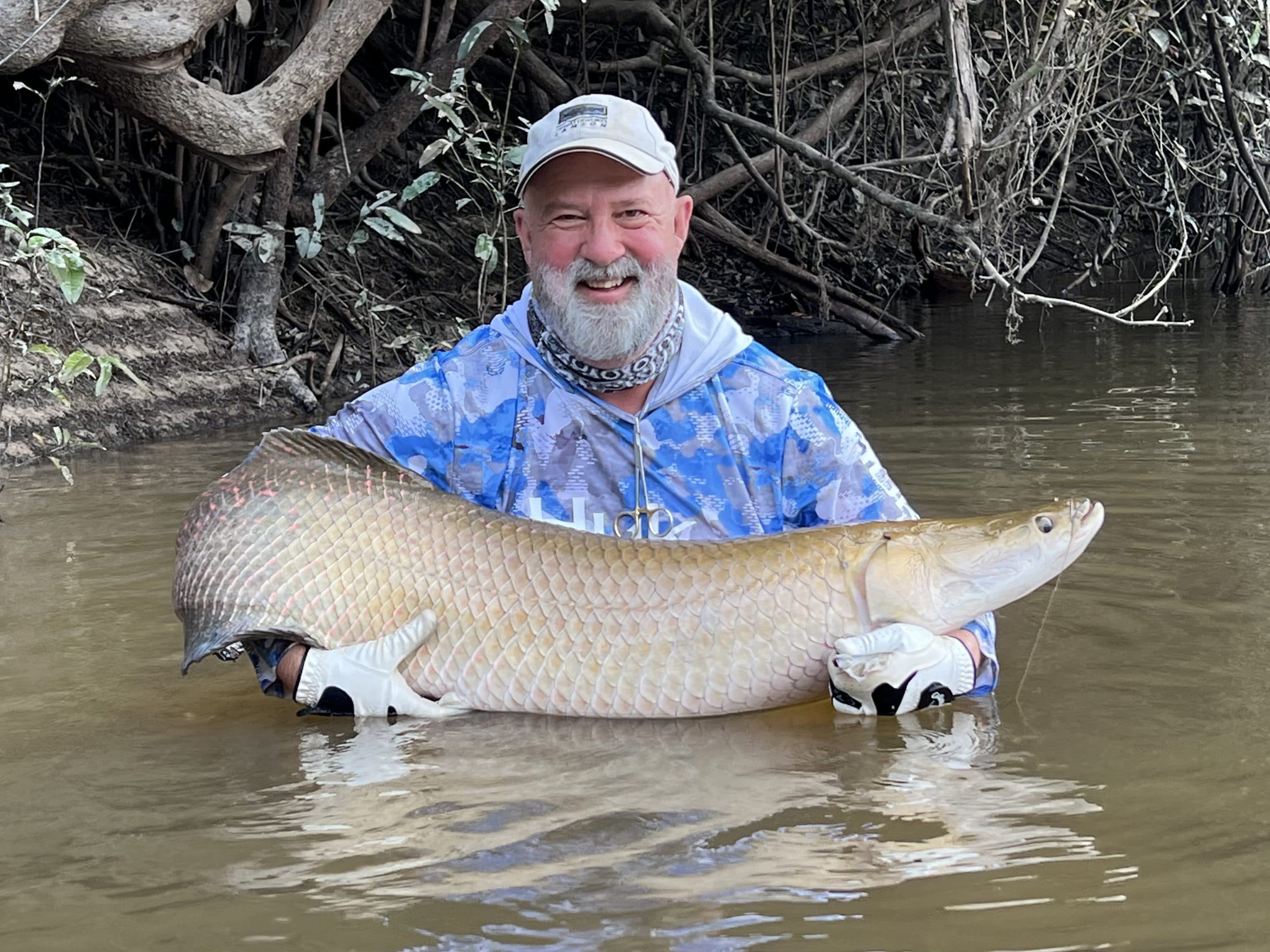
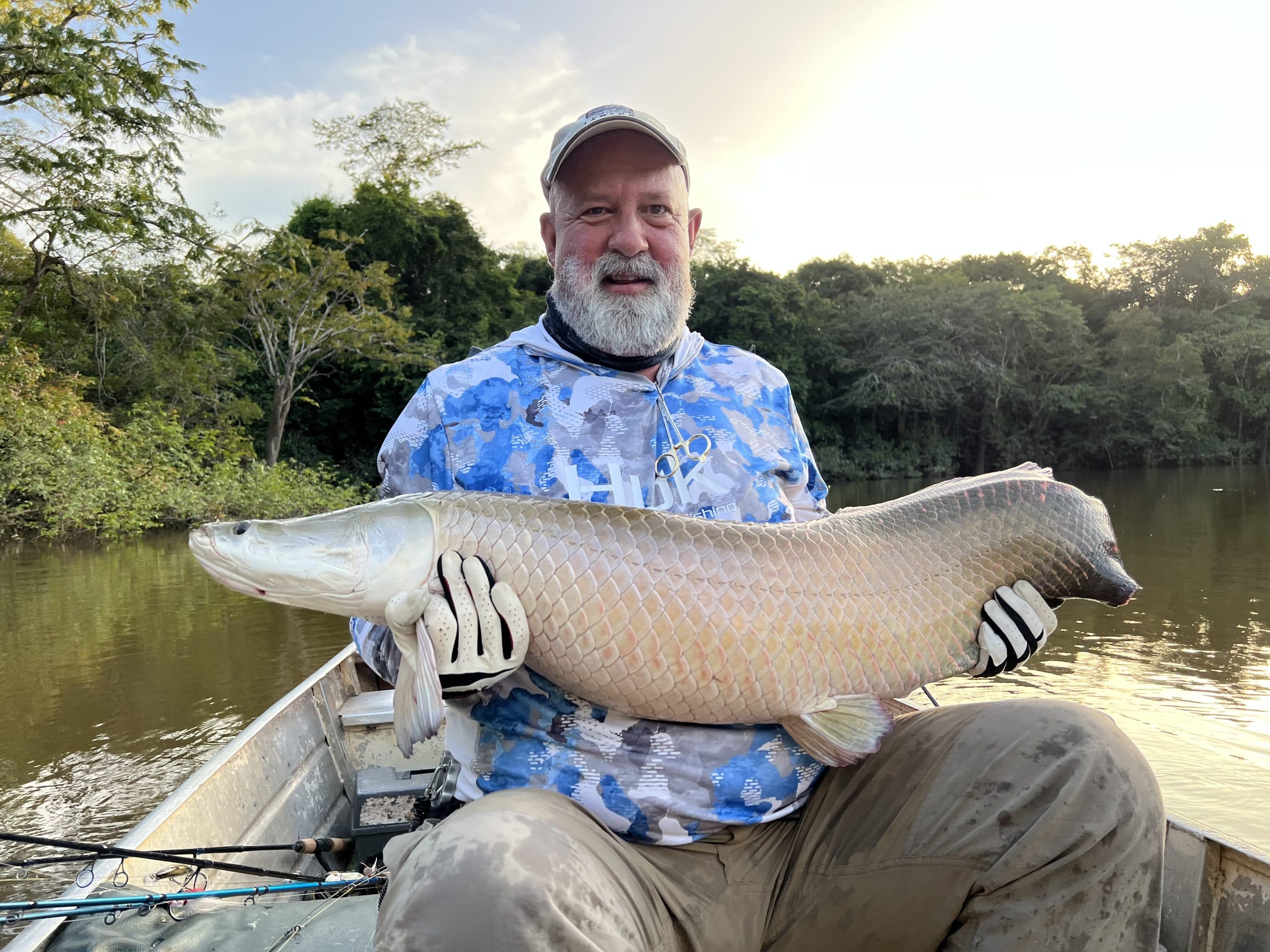
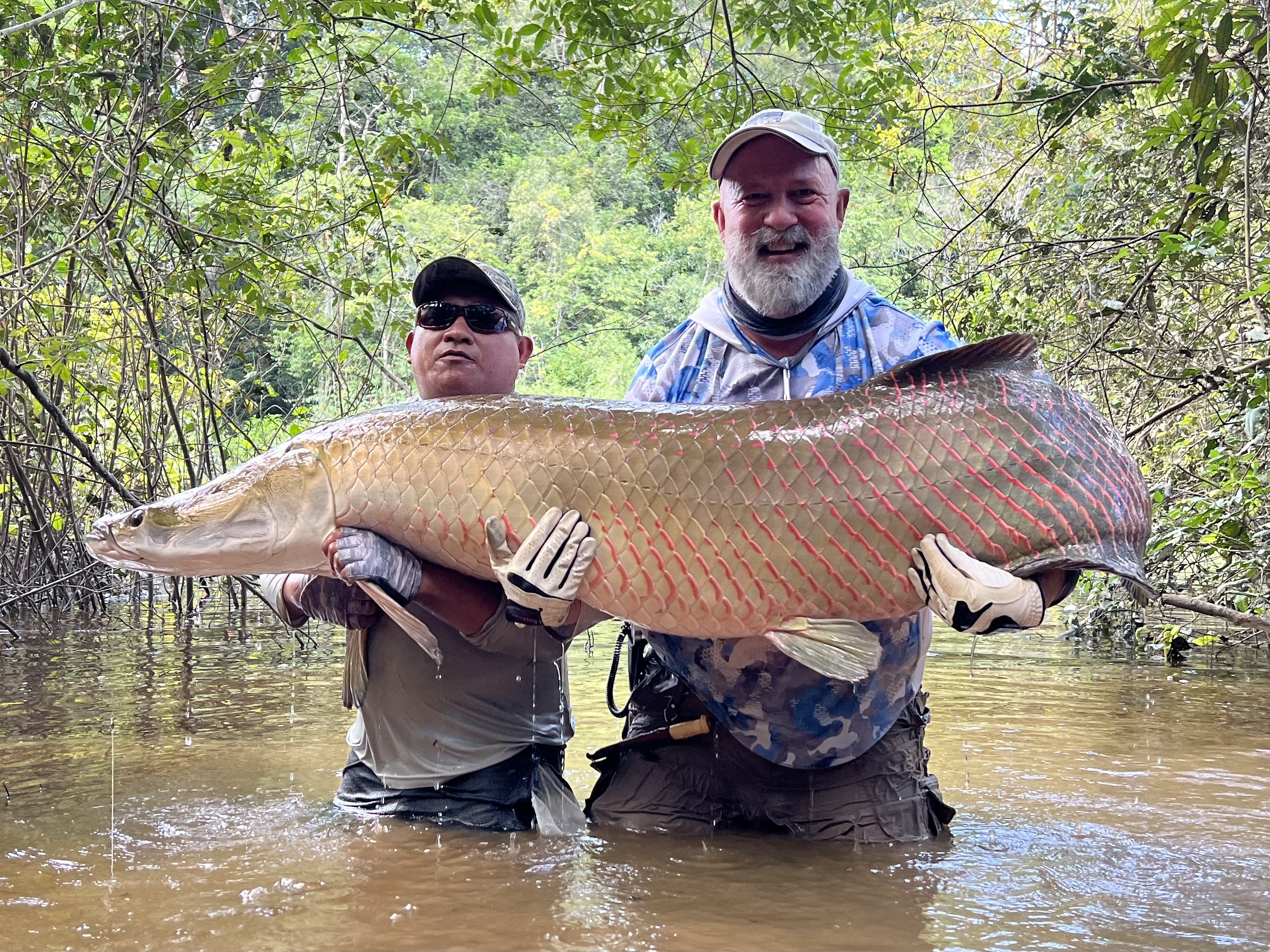

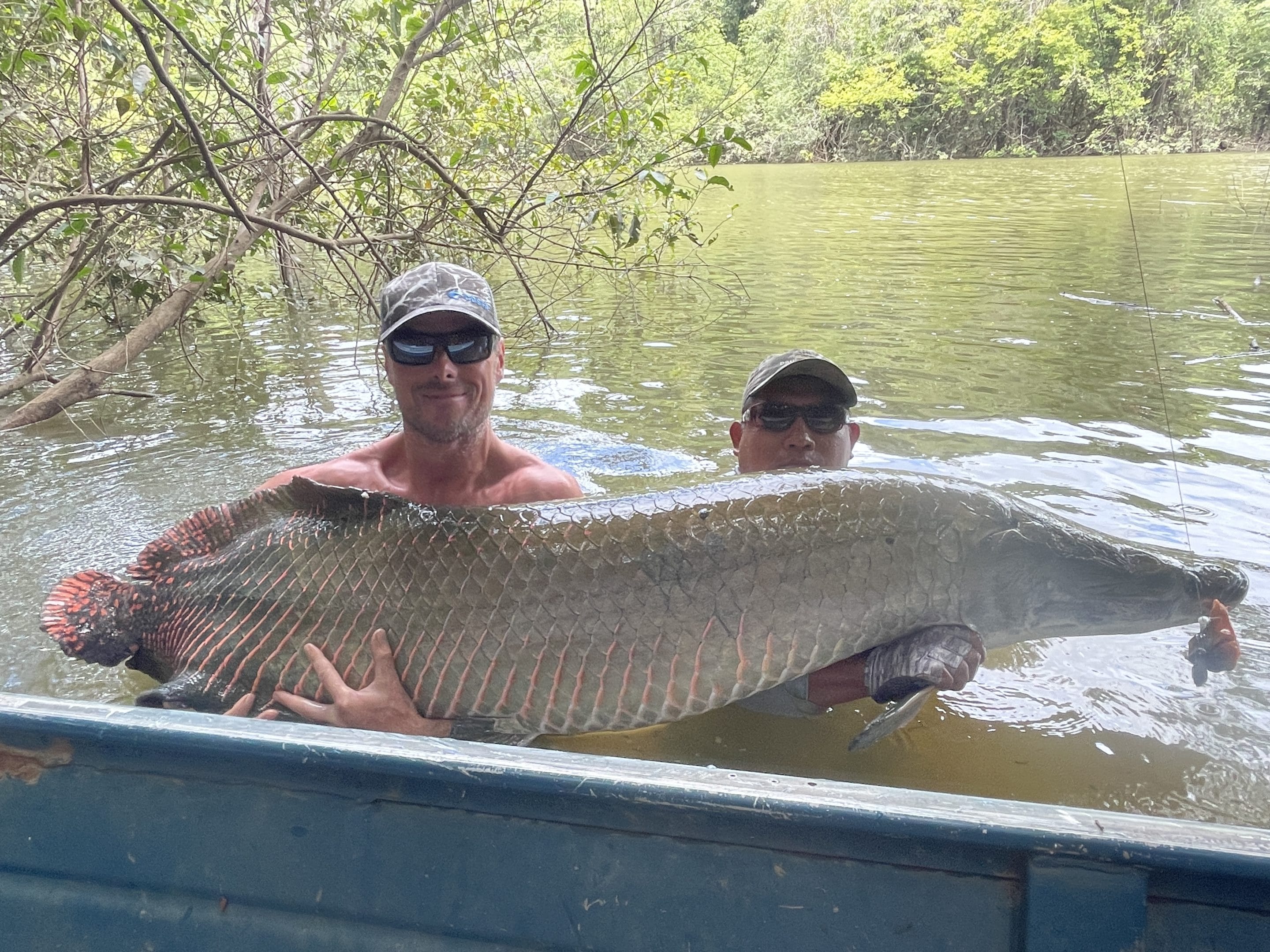
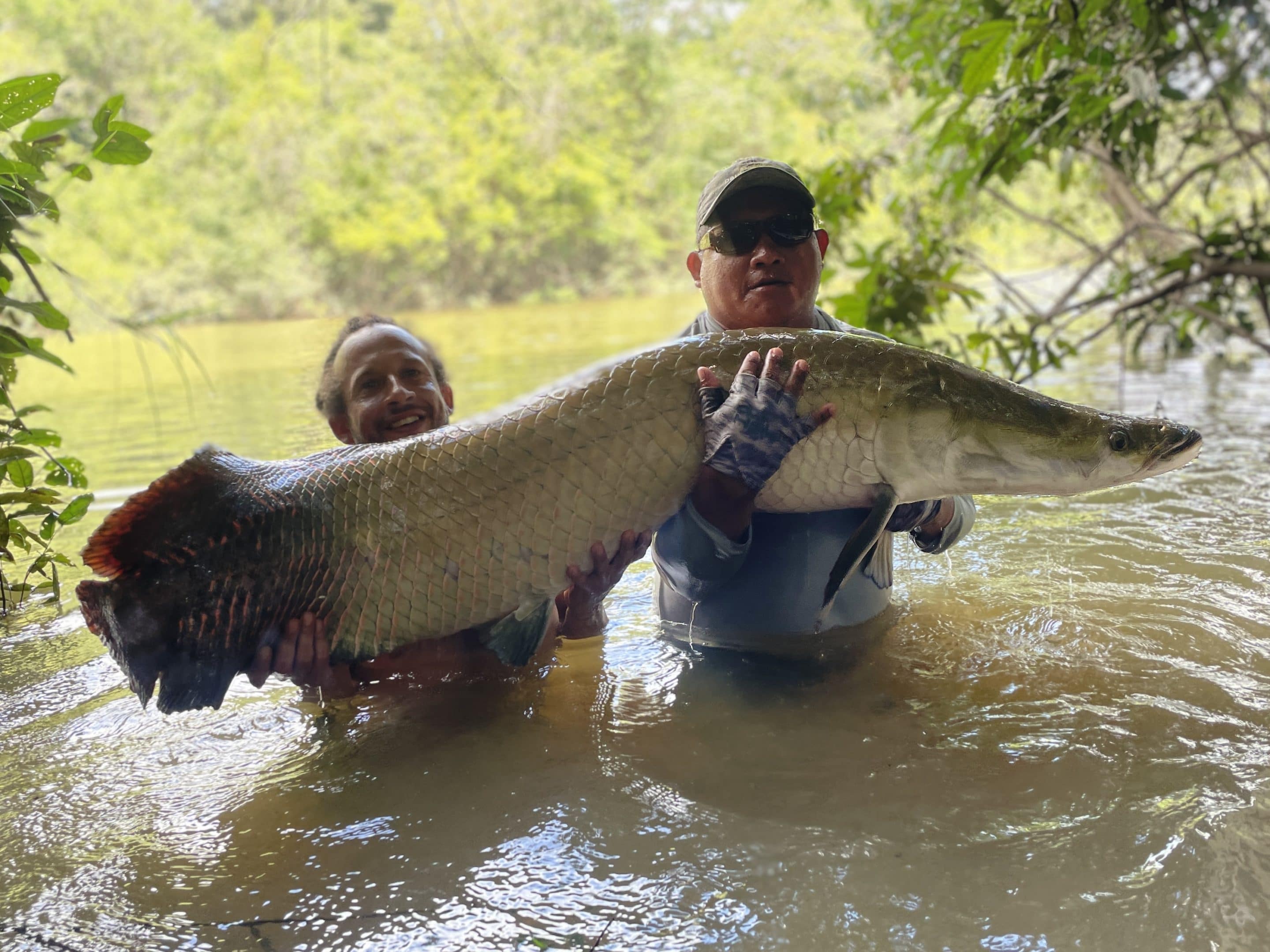
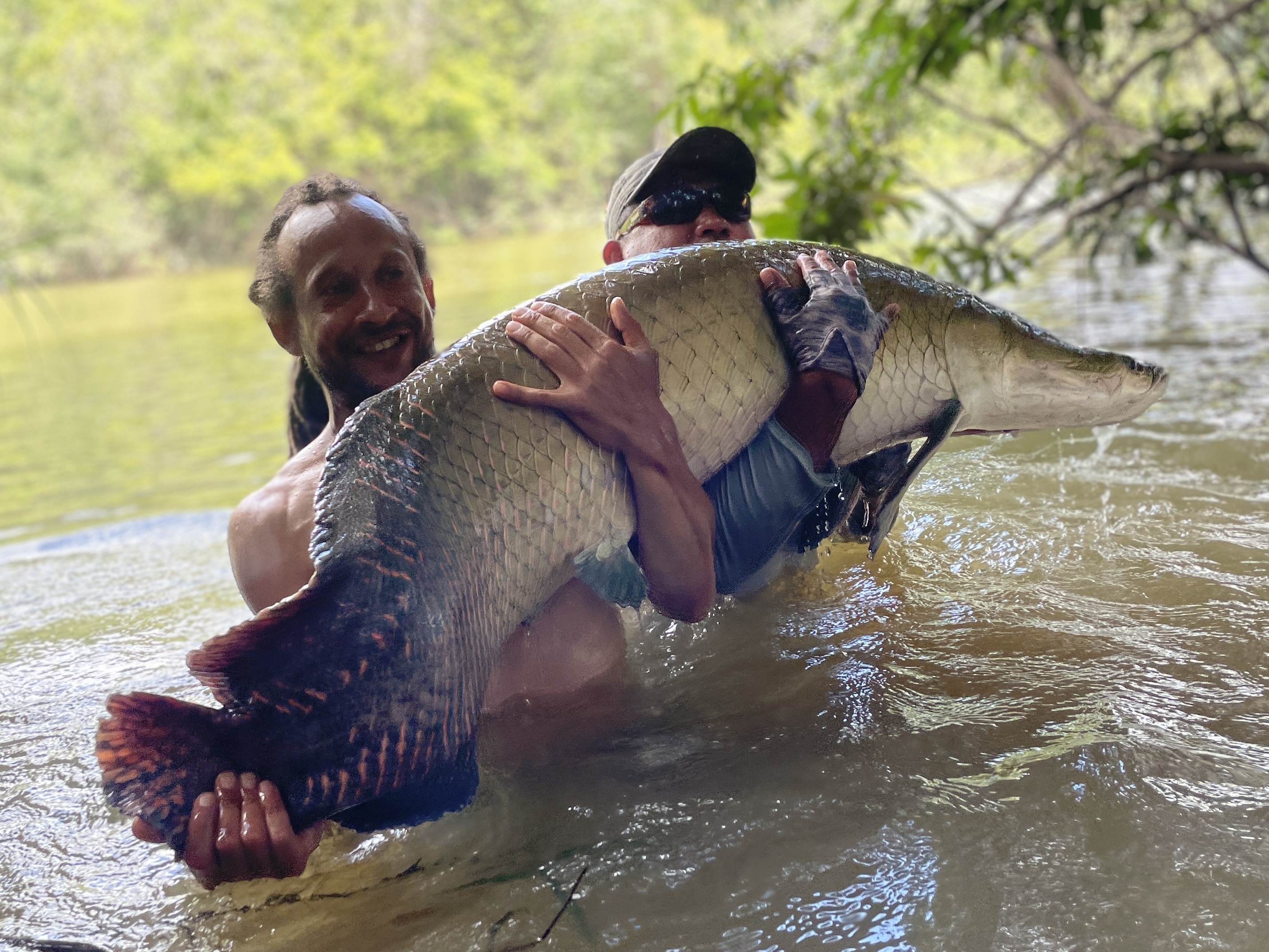
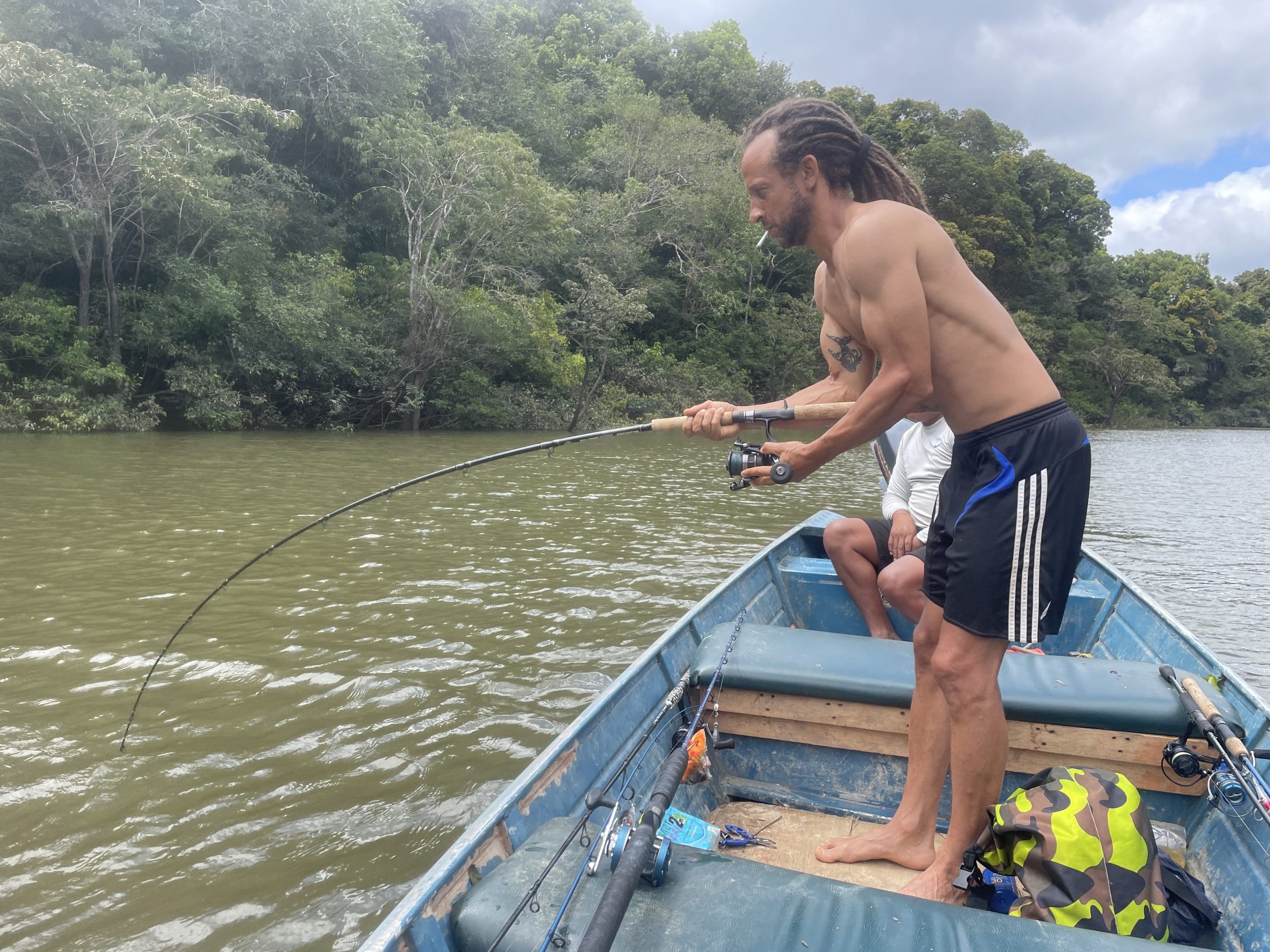
Arowana
These fish are gorgeous. They feed on bugs and small fish on the surface. They are almost exclusively top water feeders. They jump, they slide, and they taste delicious.
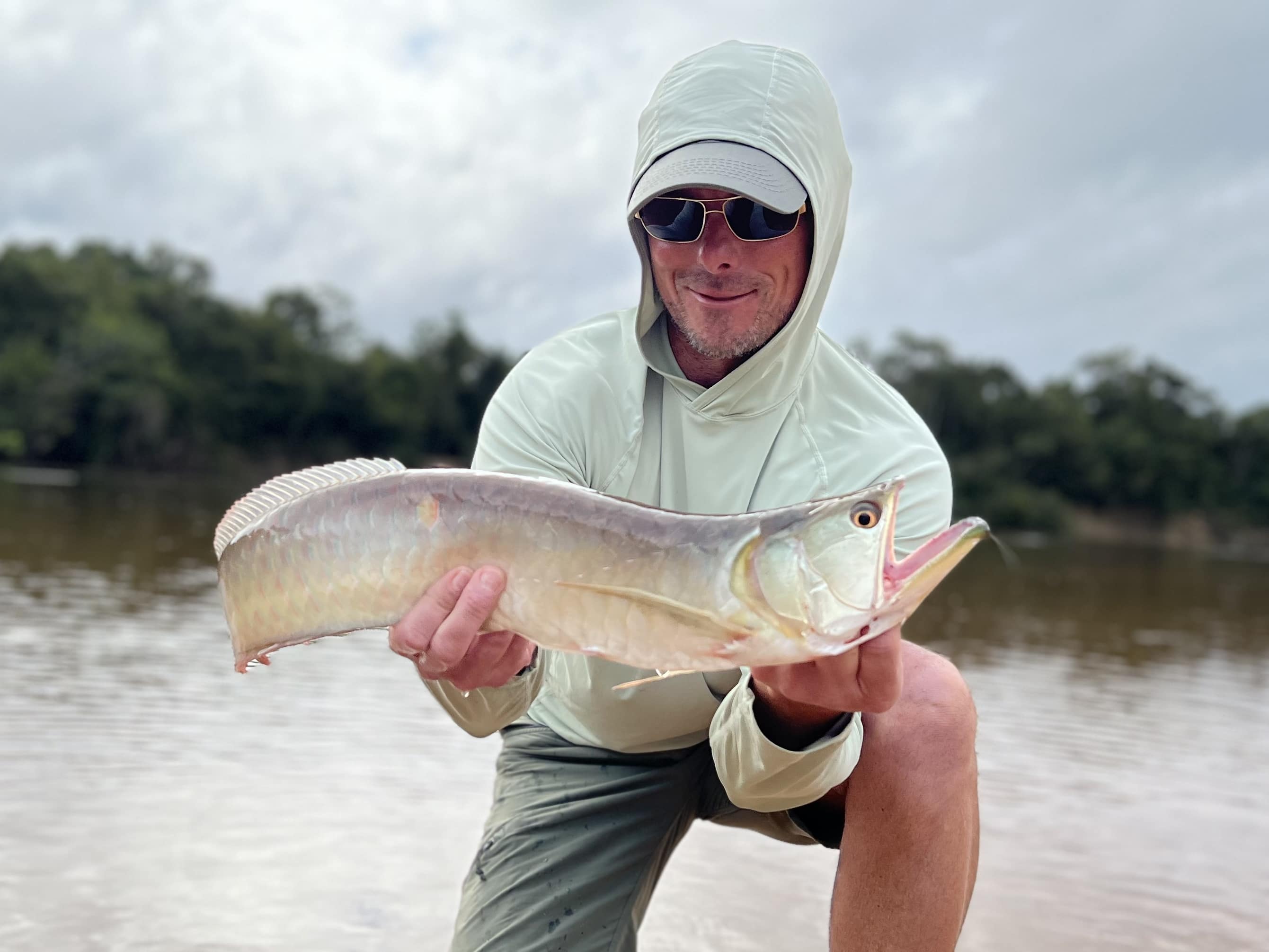
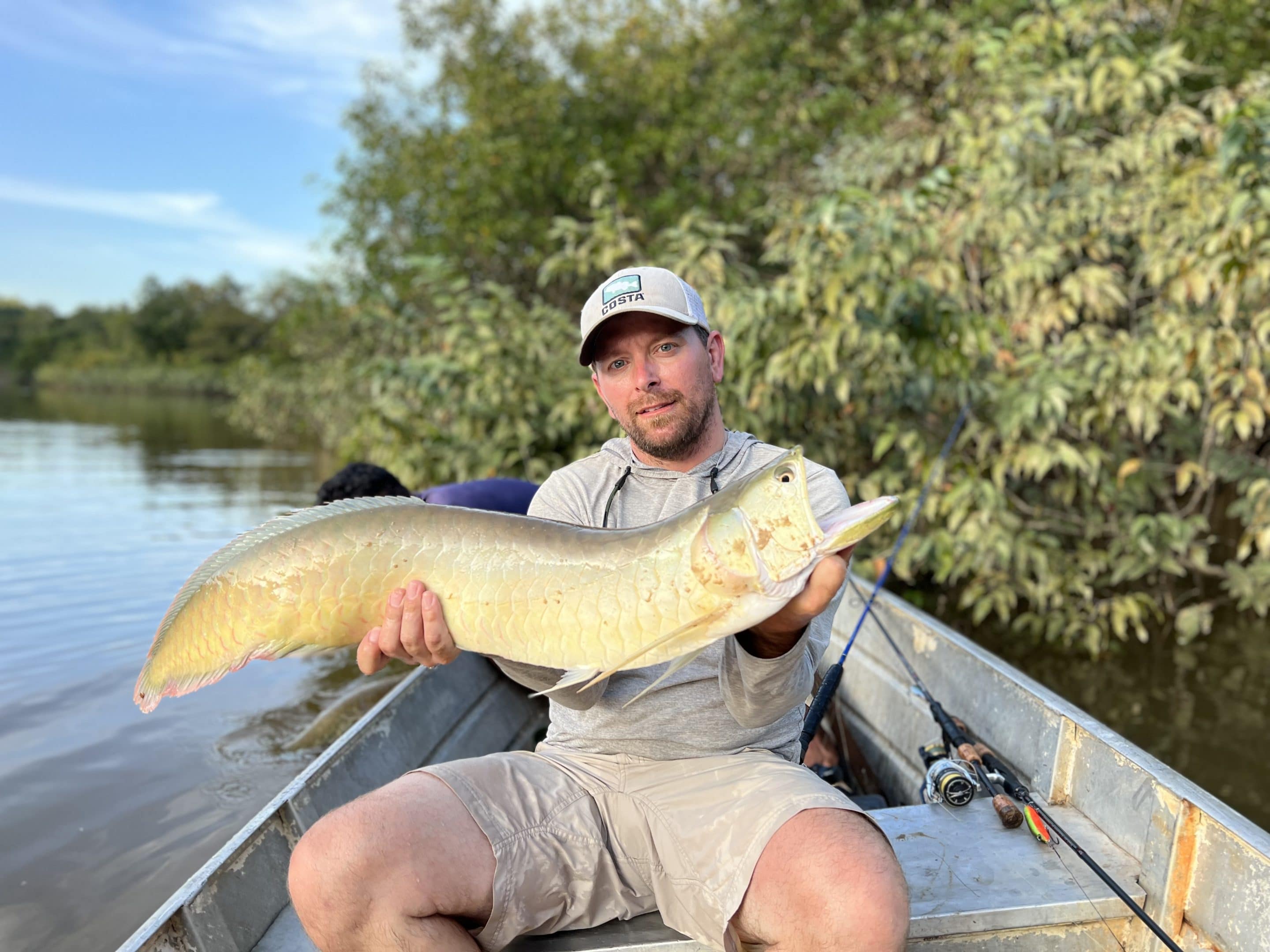

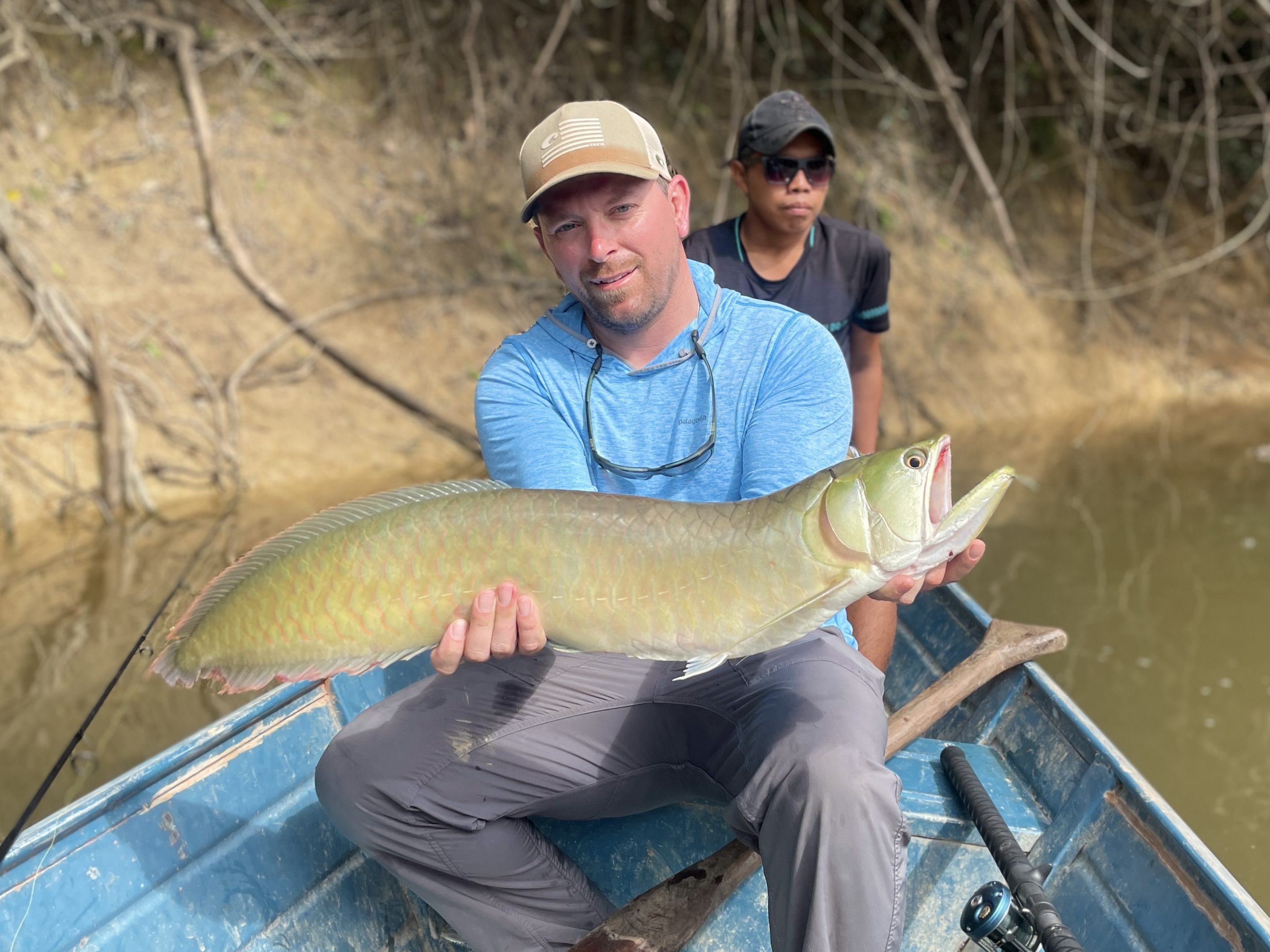
Peacock Bass
We faced somewhat challenging fishing conditions on this trip in that the water was very high. High water pushes peacock bass into the trees and hard to reach lagoons making it difficult if not impossible to present baits. Bottom line, we had small windows where we caught these beauties but catch rates were relatively low compared to previous trips. BTW – we caught far more than we photographed – just nothing remarkable enough that we felt compelled to bust out the camera.
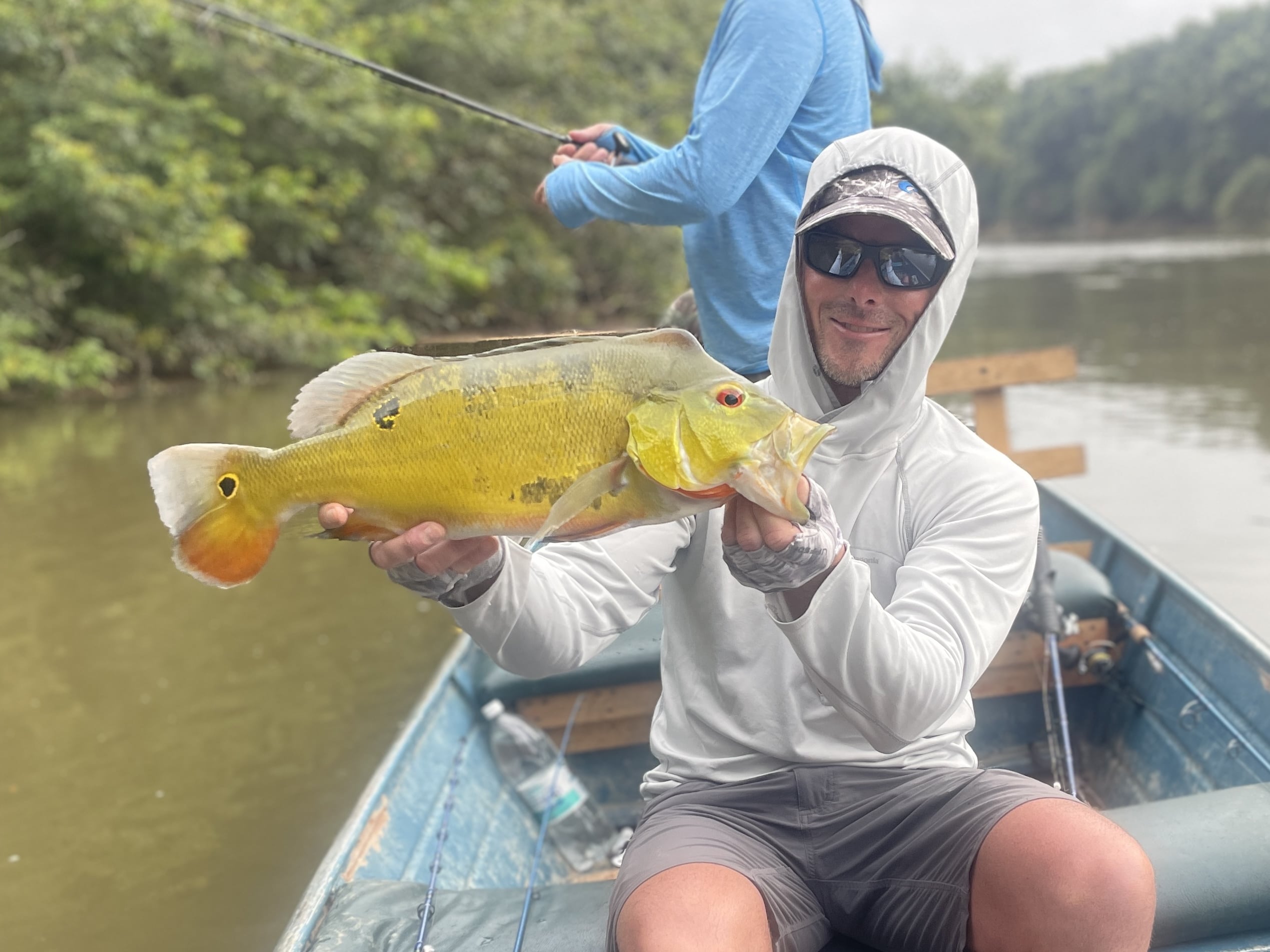
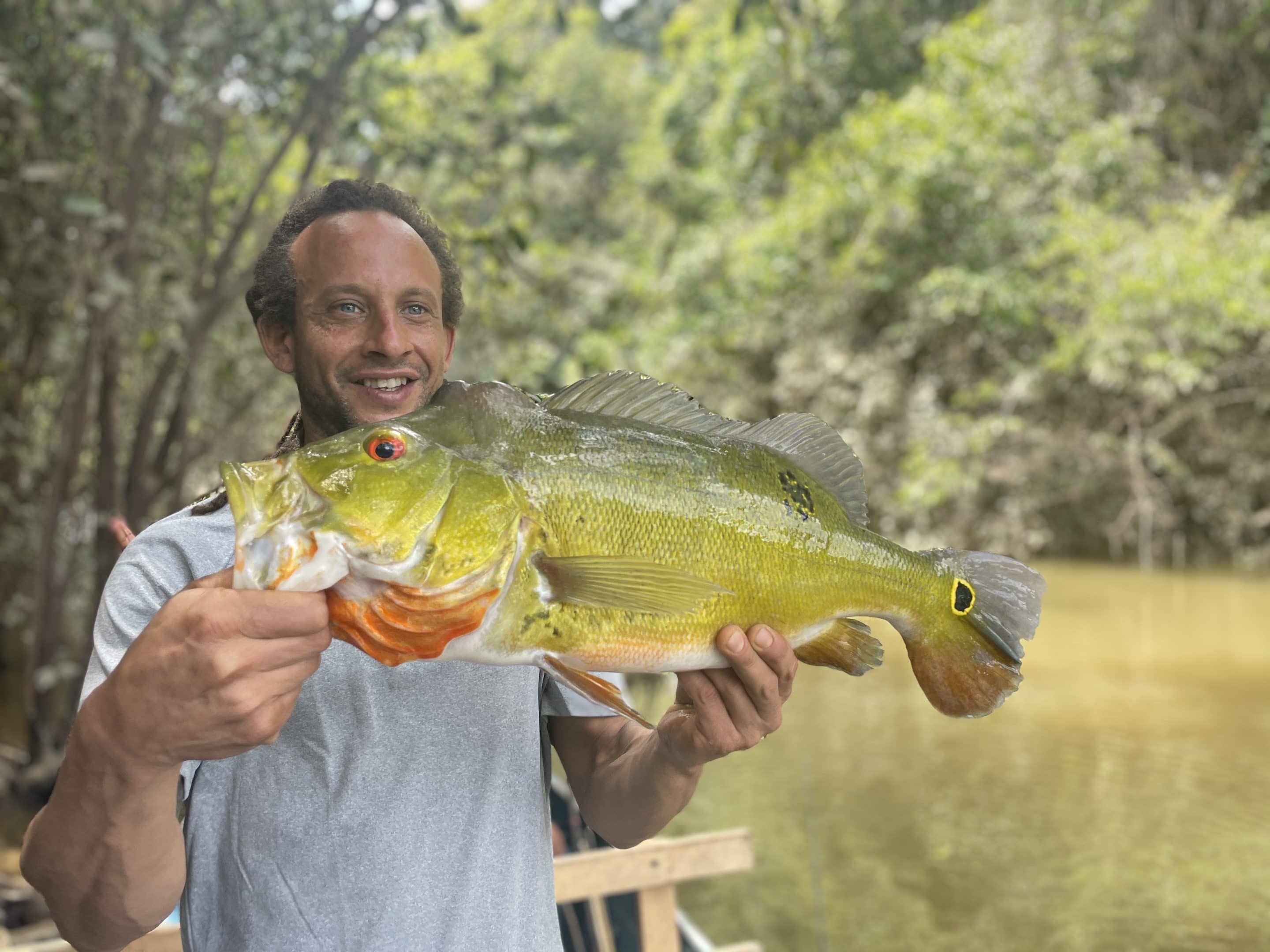
Redtail Catfish
Make no mistake about it, catfish are the underwater kings of the jungle. They are by far the biggest and most powerful fish around. They eat what they want, when they want. They will often break you, your gear, or both. Redtail catfish are the biggest and most plentiful catfish in the area we fished.
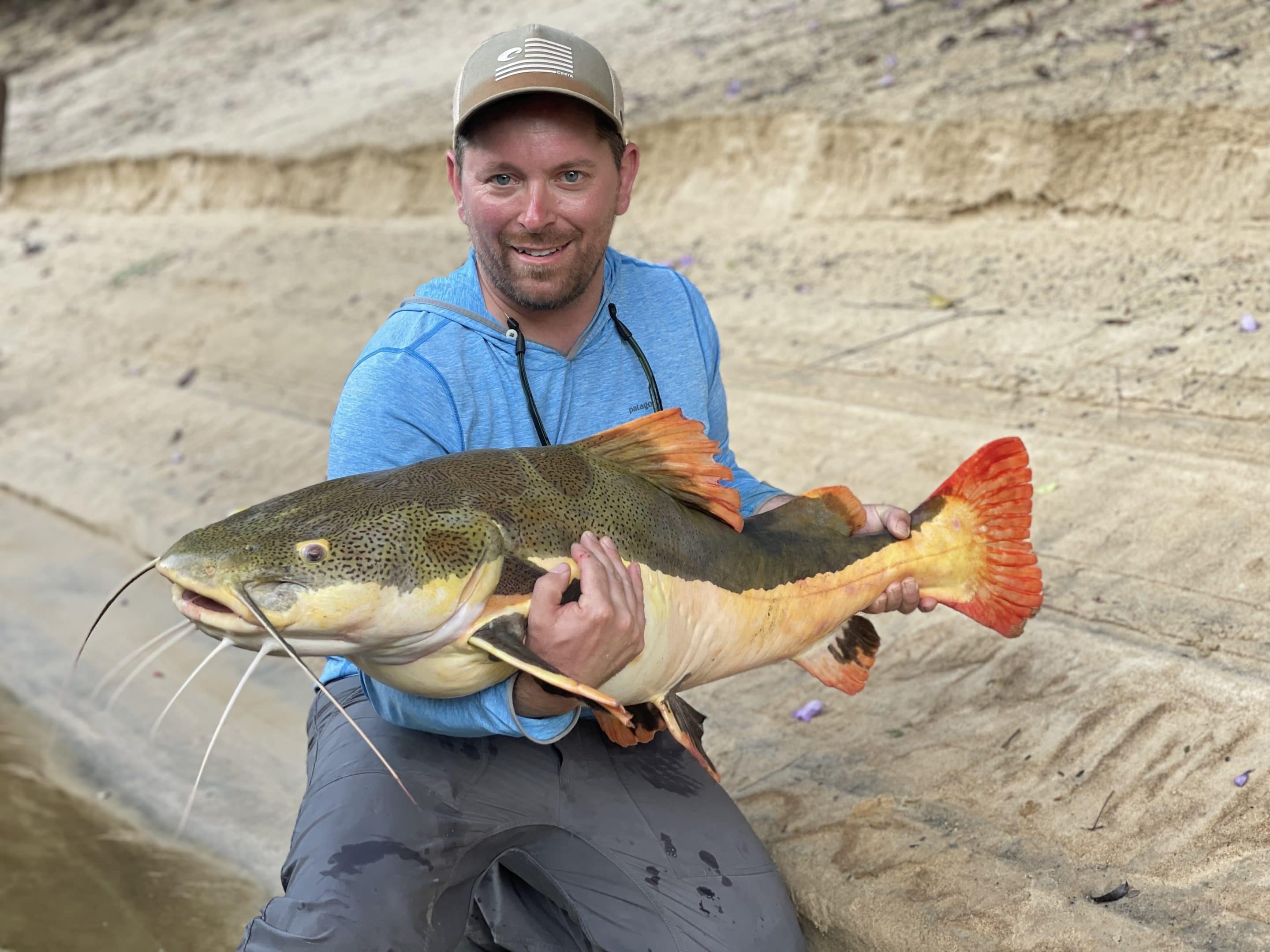
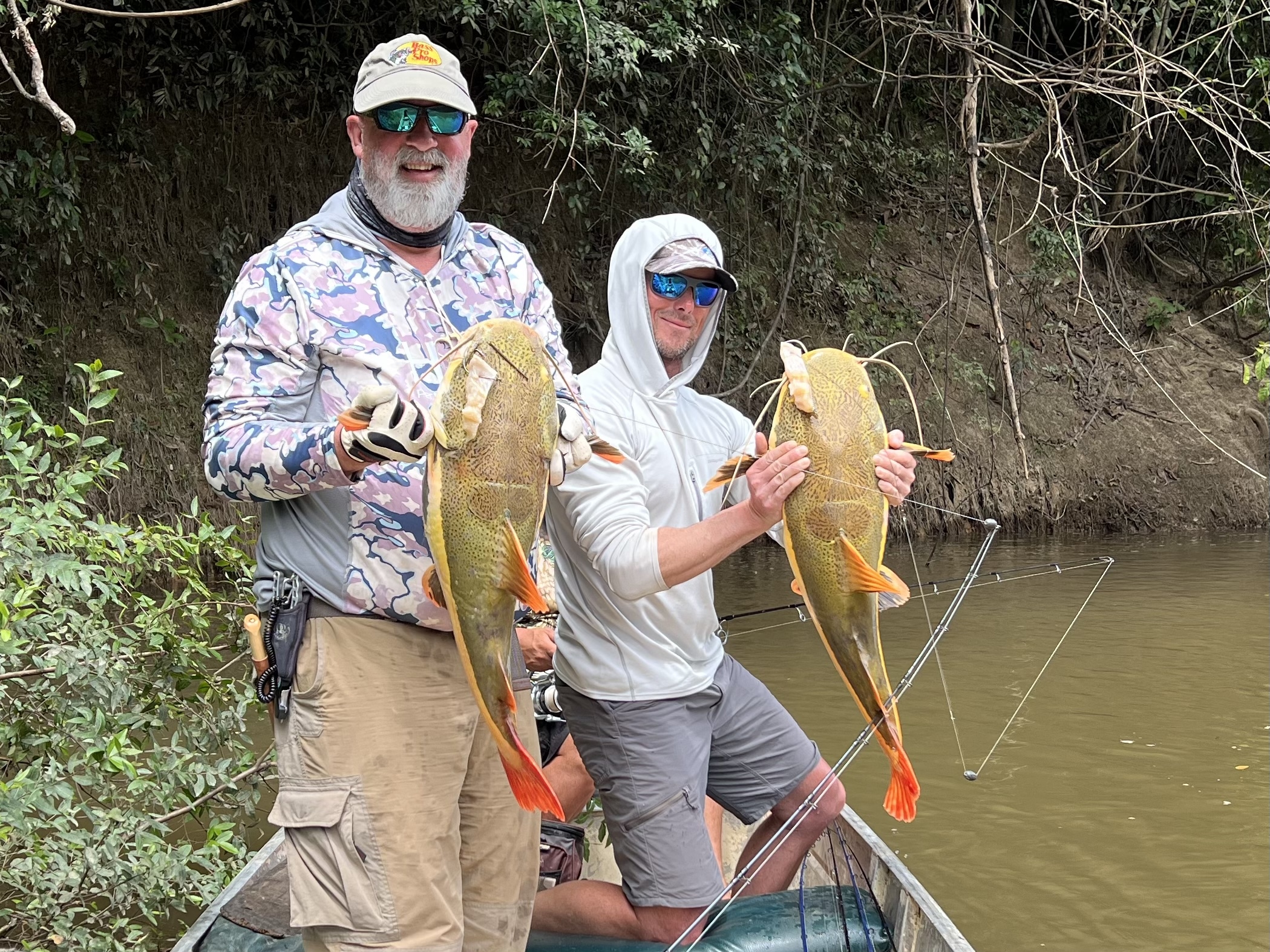
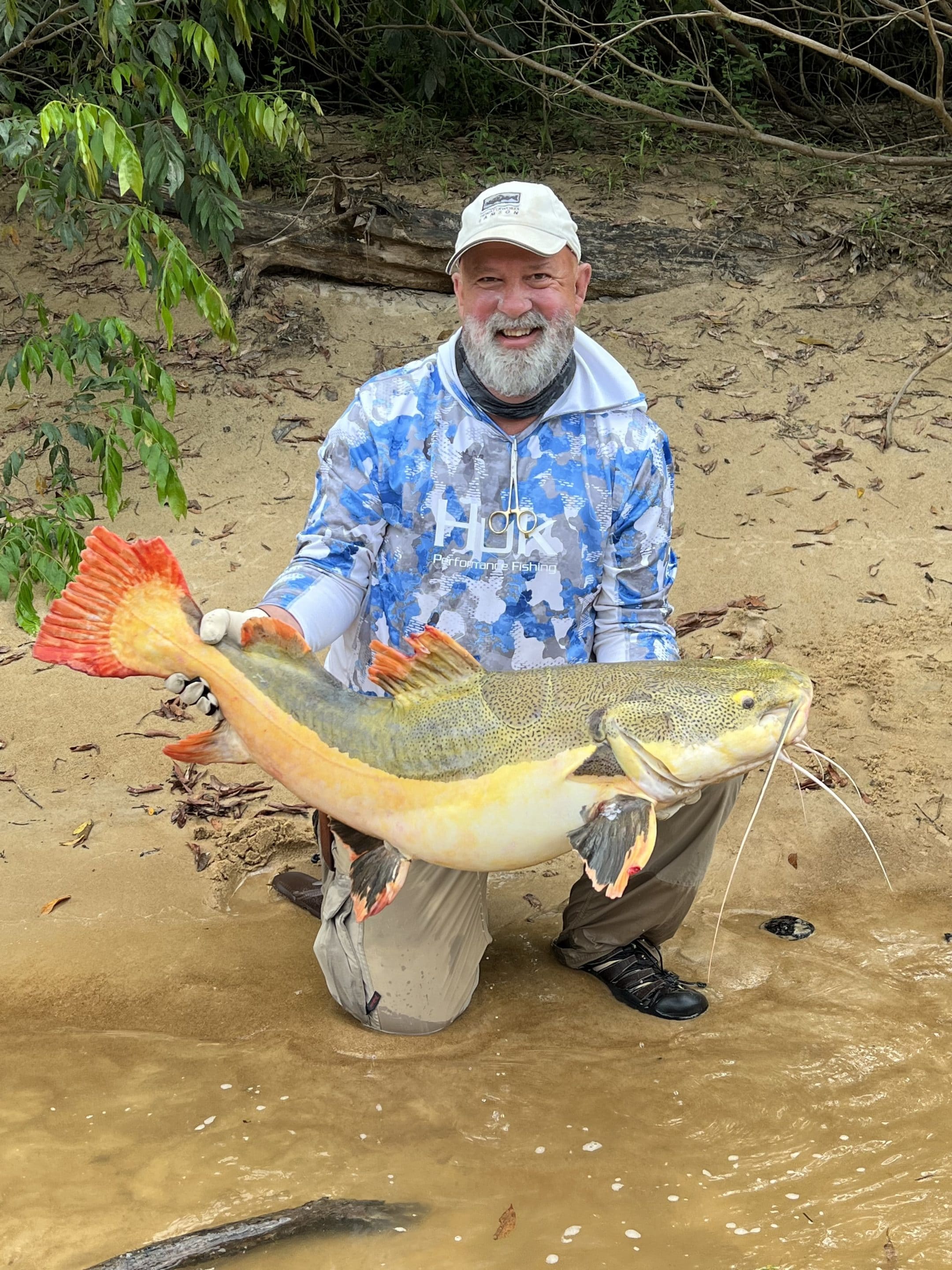
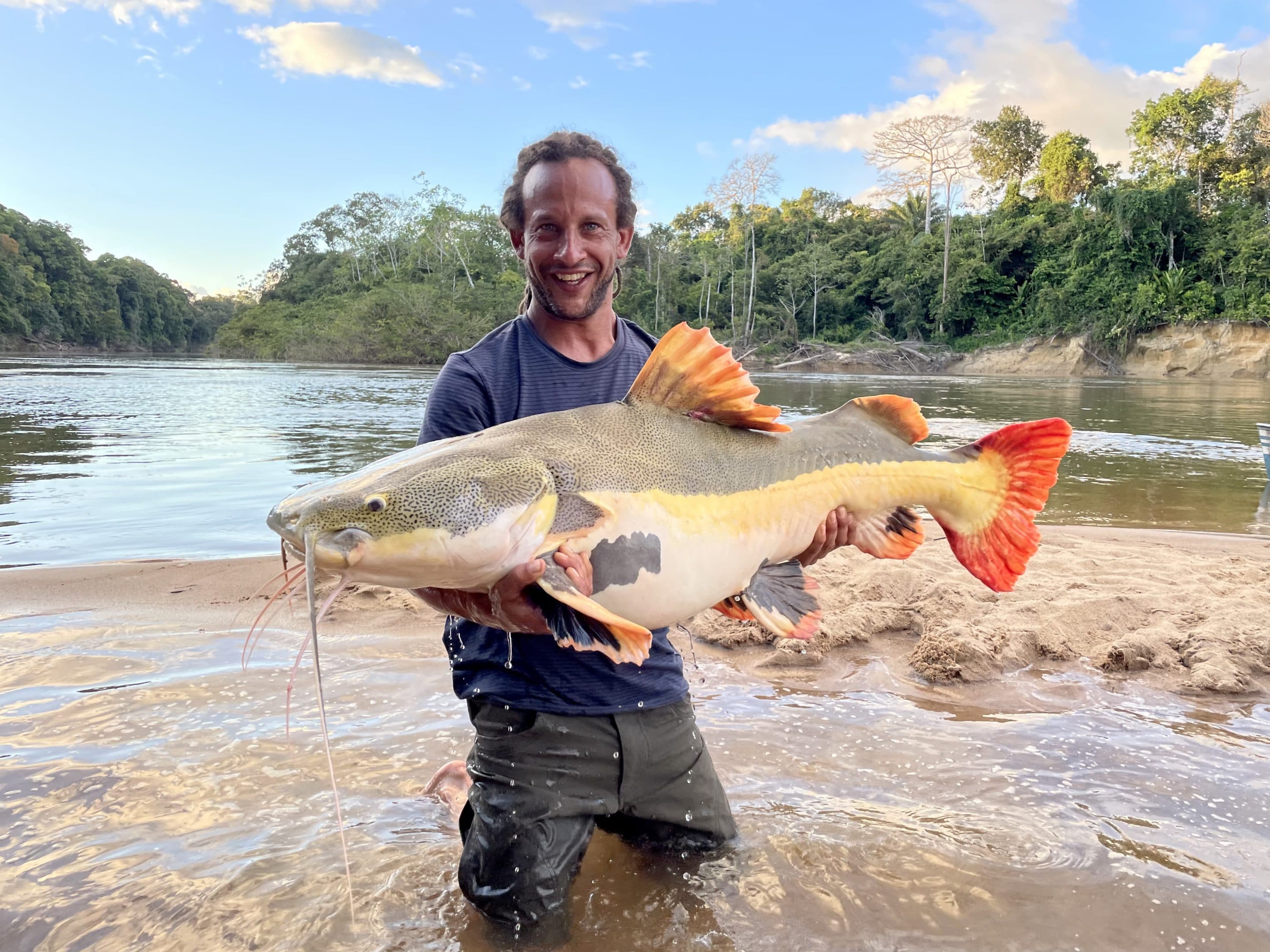

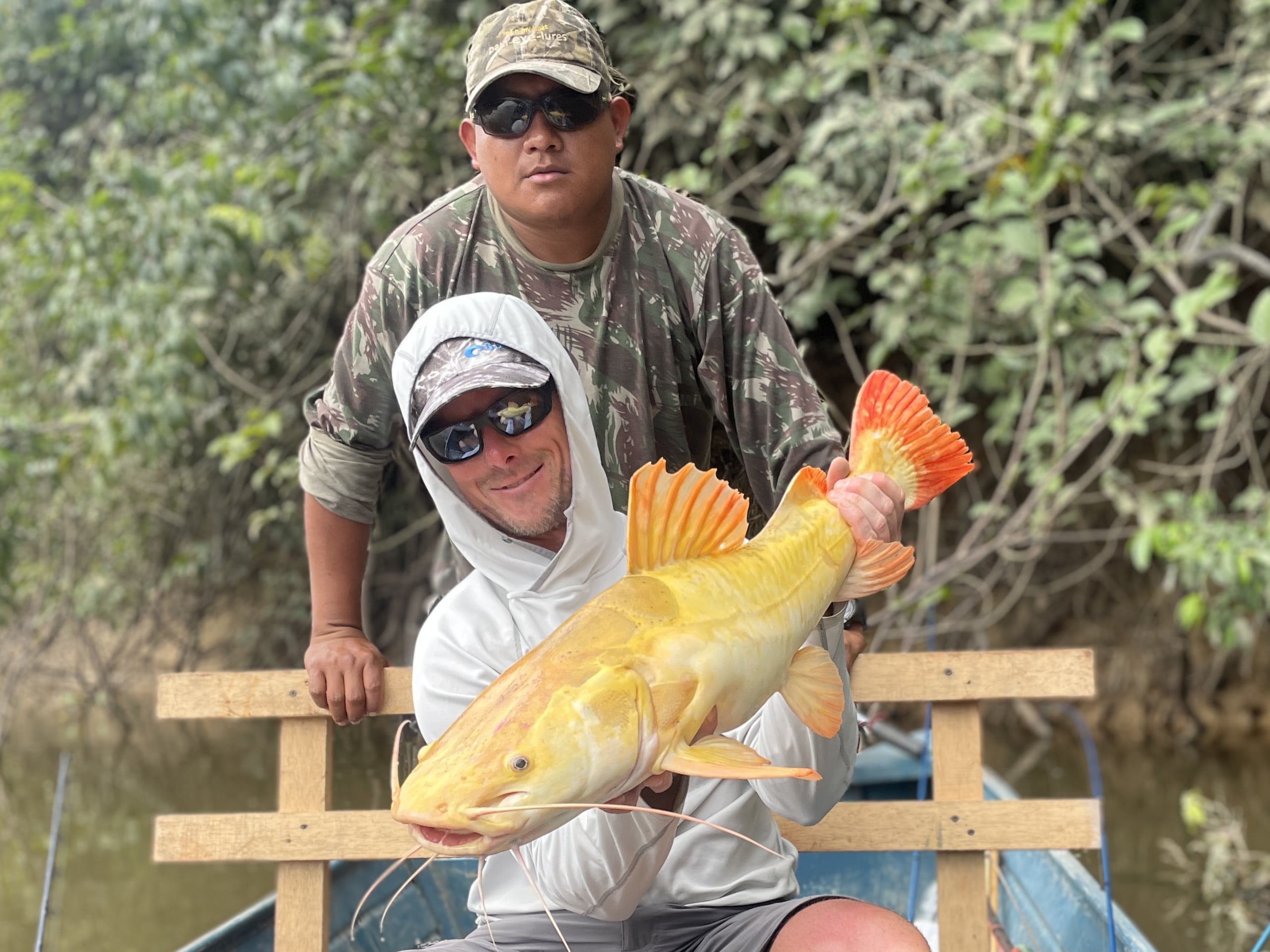
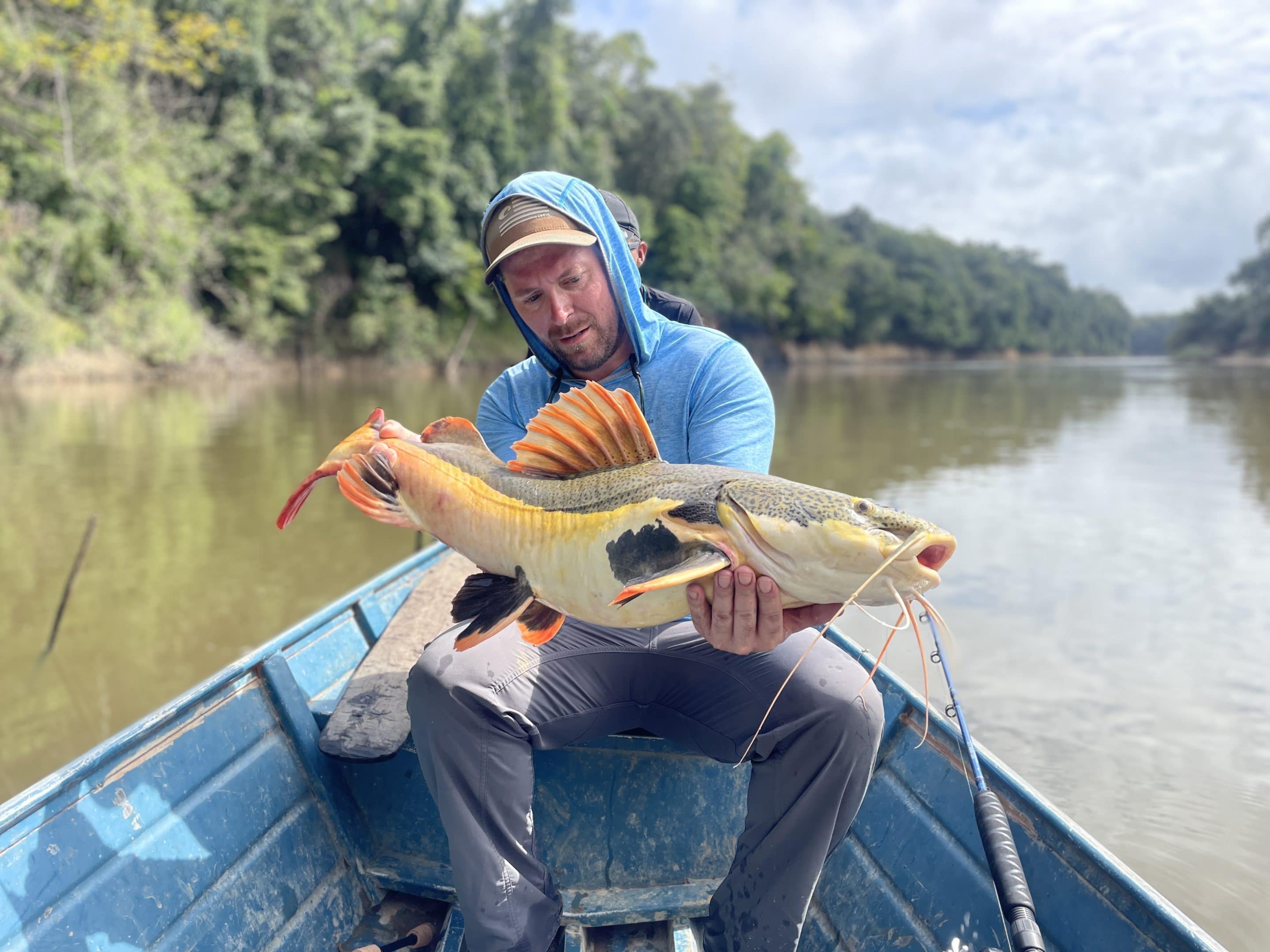
Surubim Catfish
In the area we fished, surubim catfish are the second biggest of the catfish family. They are gorgeous, hard fighters, and are incredibly delicious table fare. On this trip, we caught a lot compared to previous iterations. Here’s a couple of biggies.

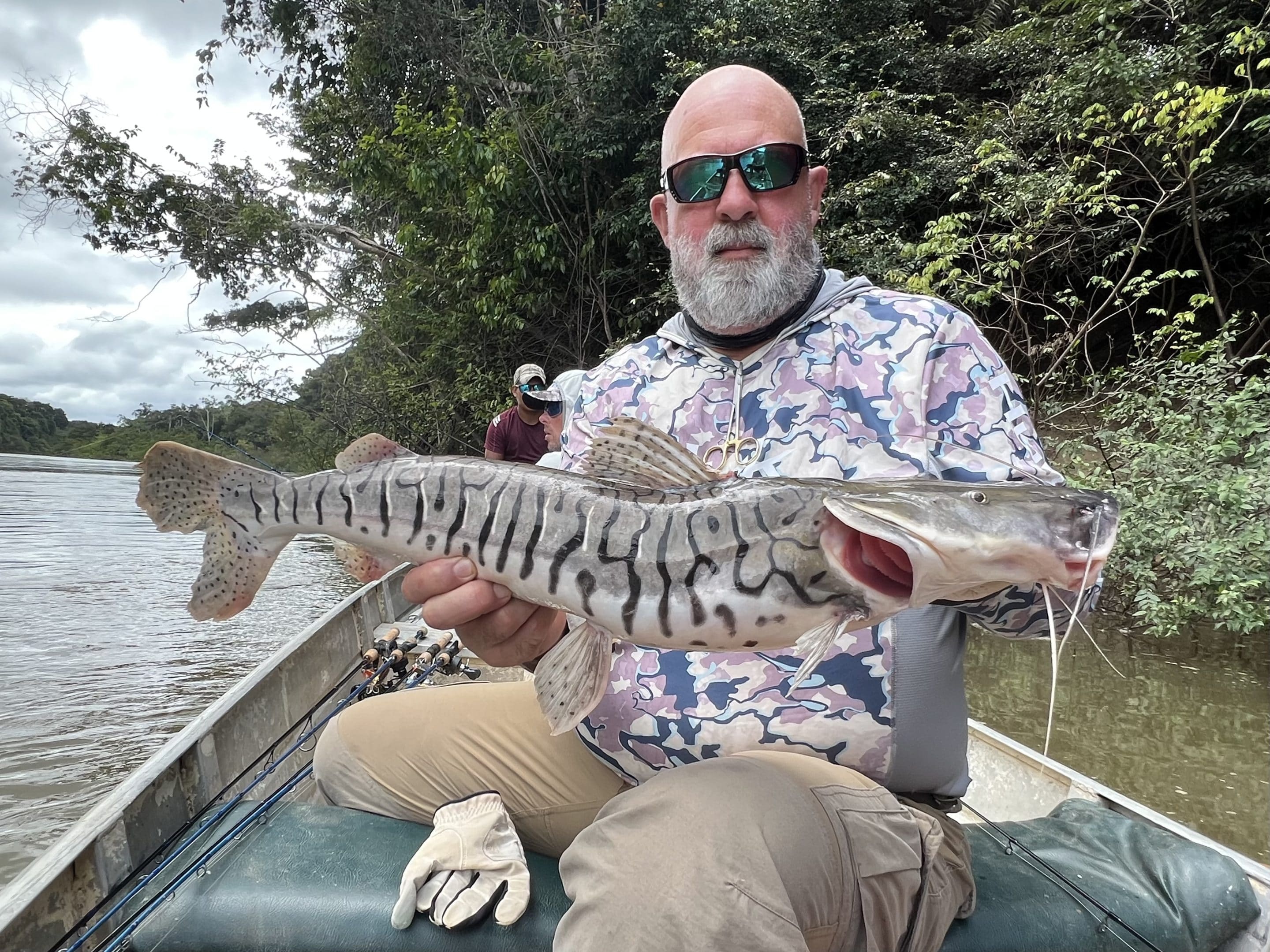
Bicuda
These fish are like a combination of a northern pike and a steelhead. They lie in ambush in current breaks, pocket water, and along banks – like a pike. They also blast though baits like a pike. However, once on the end of your line, they skyrocket like a fresh steelhead – spinning around and often running toward and under the boat. They aren’t table fare but since they’re very oily, they make excellent cut bait.
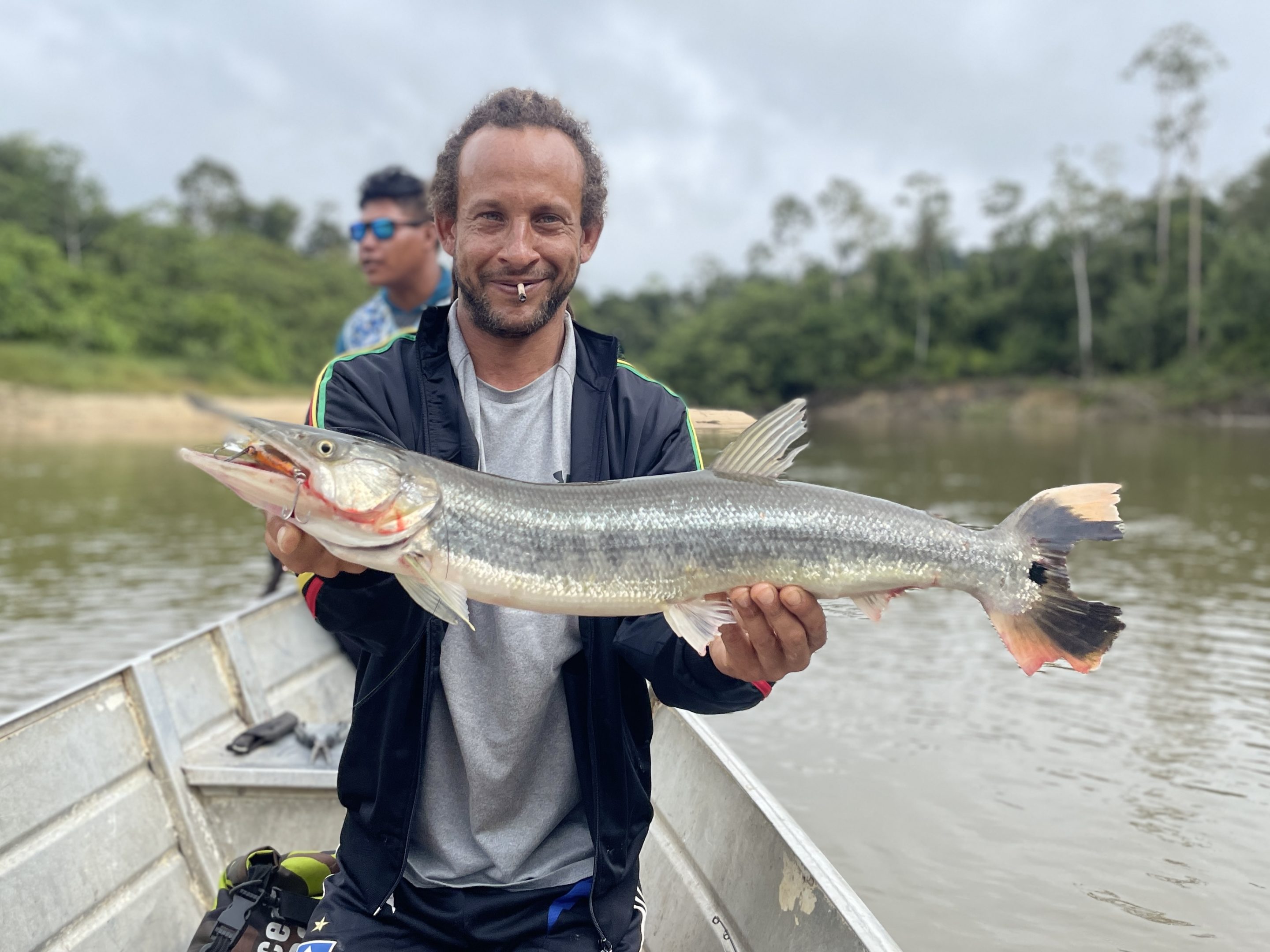
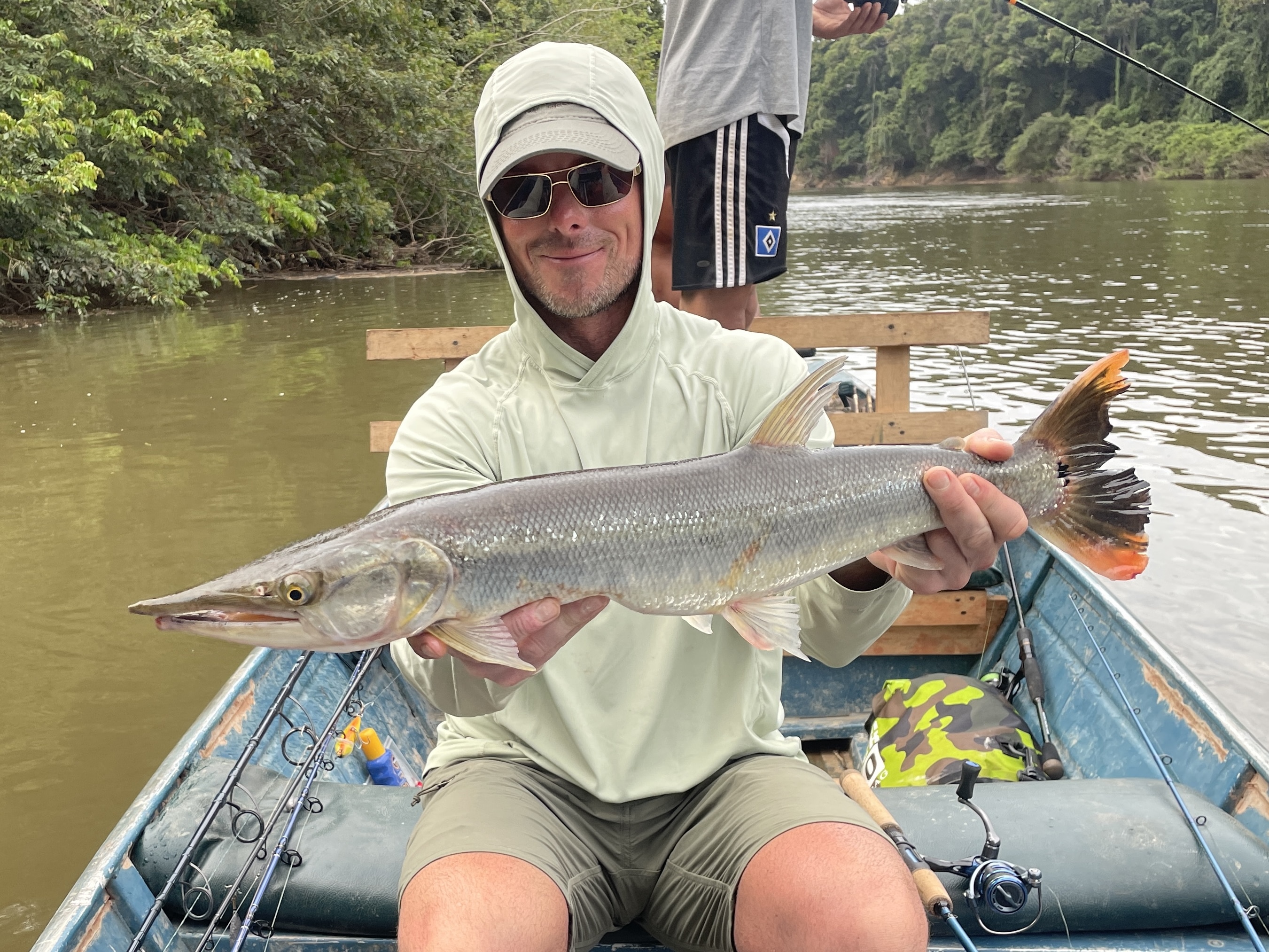
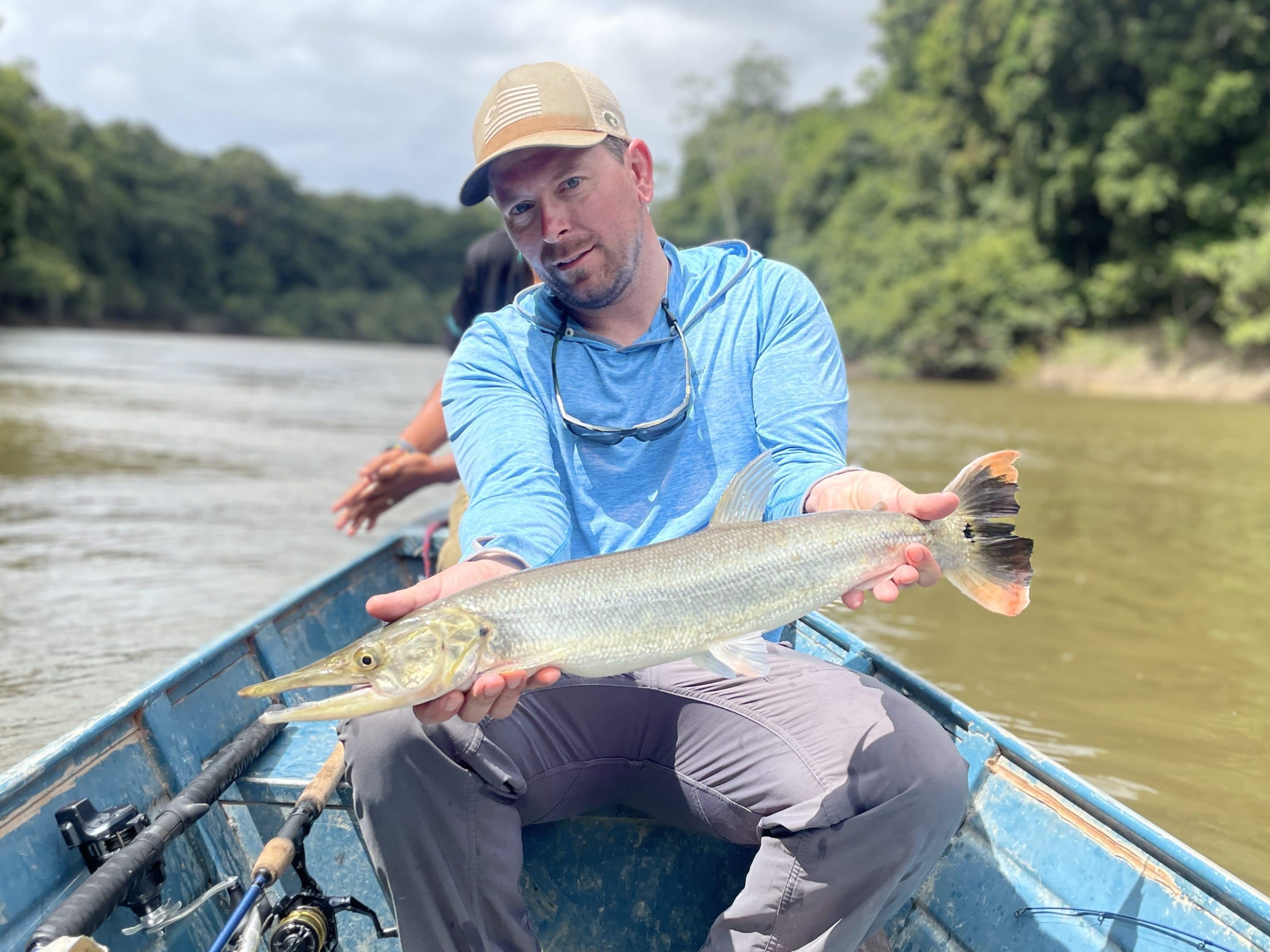
Payara
These excessively toothy predators live along current breaks near rocks and fast-moving water. They behave a lot like steelhead and silver salmon. Because we had very high and fast-moving water on this trip, these fish were tough to hook. We had a lot of eats as evidenced by the many tooth marks in our lures but relatively few came to hand.
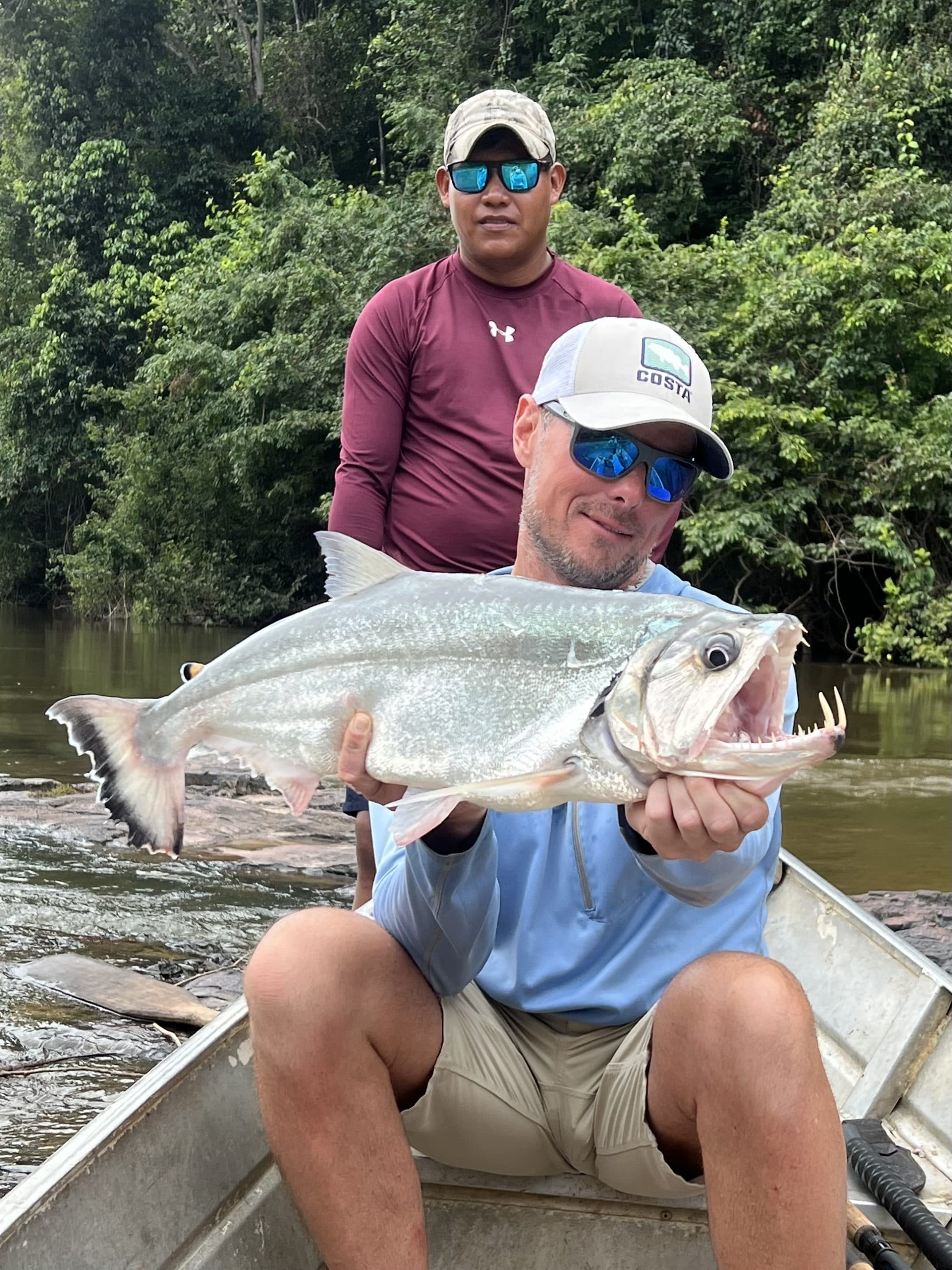

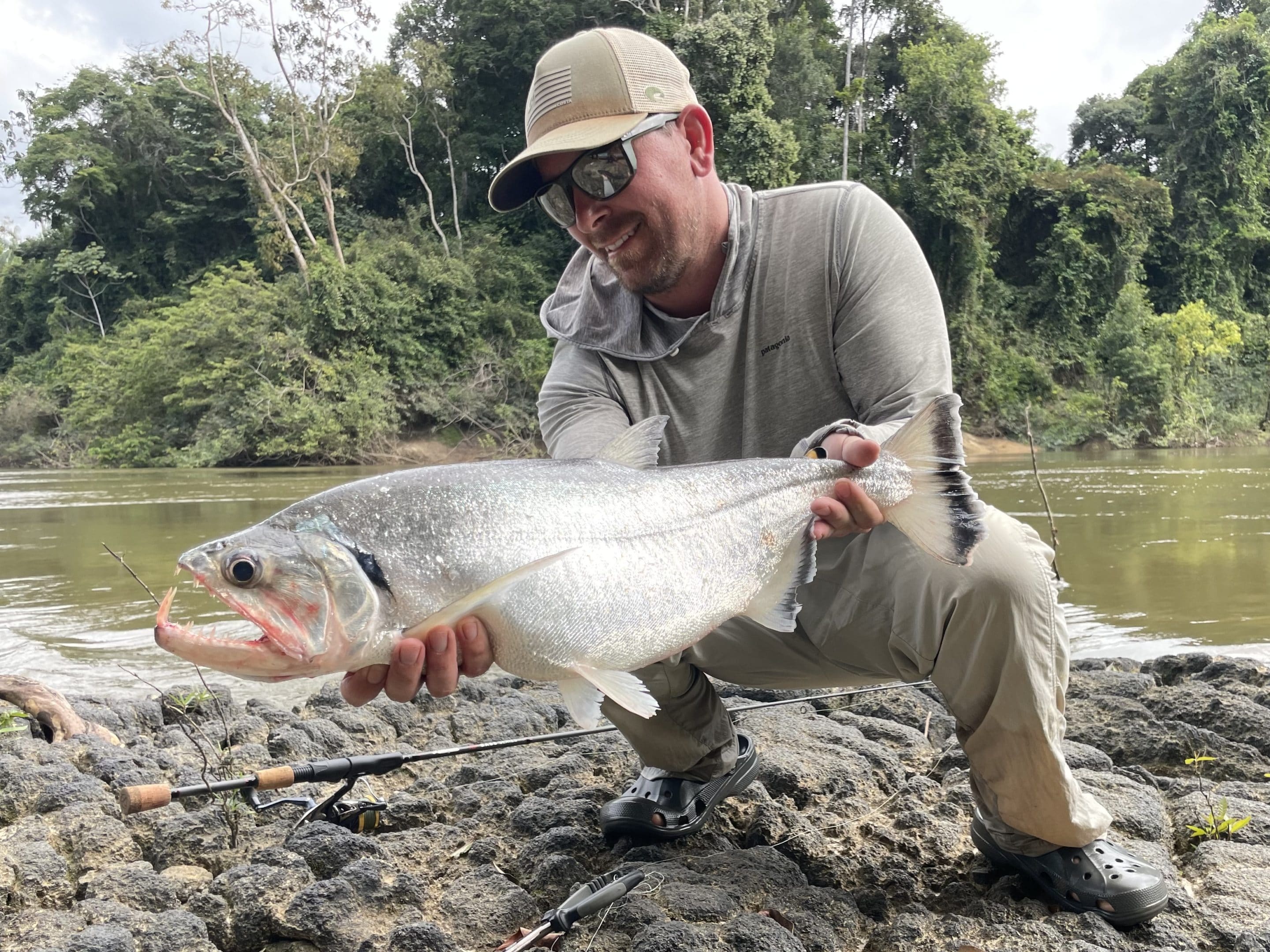
Random Fish
I could offer the native names for all of these fish but I’m sure someone, super into the WEIRD names for them would be quick to correct me – which is “weird” if you think about it. Bottom line, numerous catfish and other smaller fish came to hand and offered a deeper glimpse into the diversity of the fishery

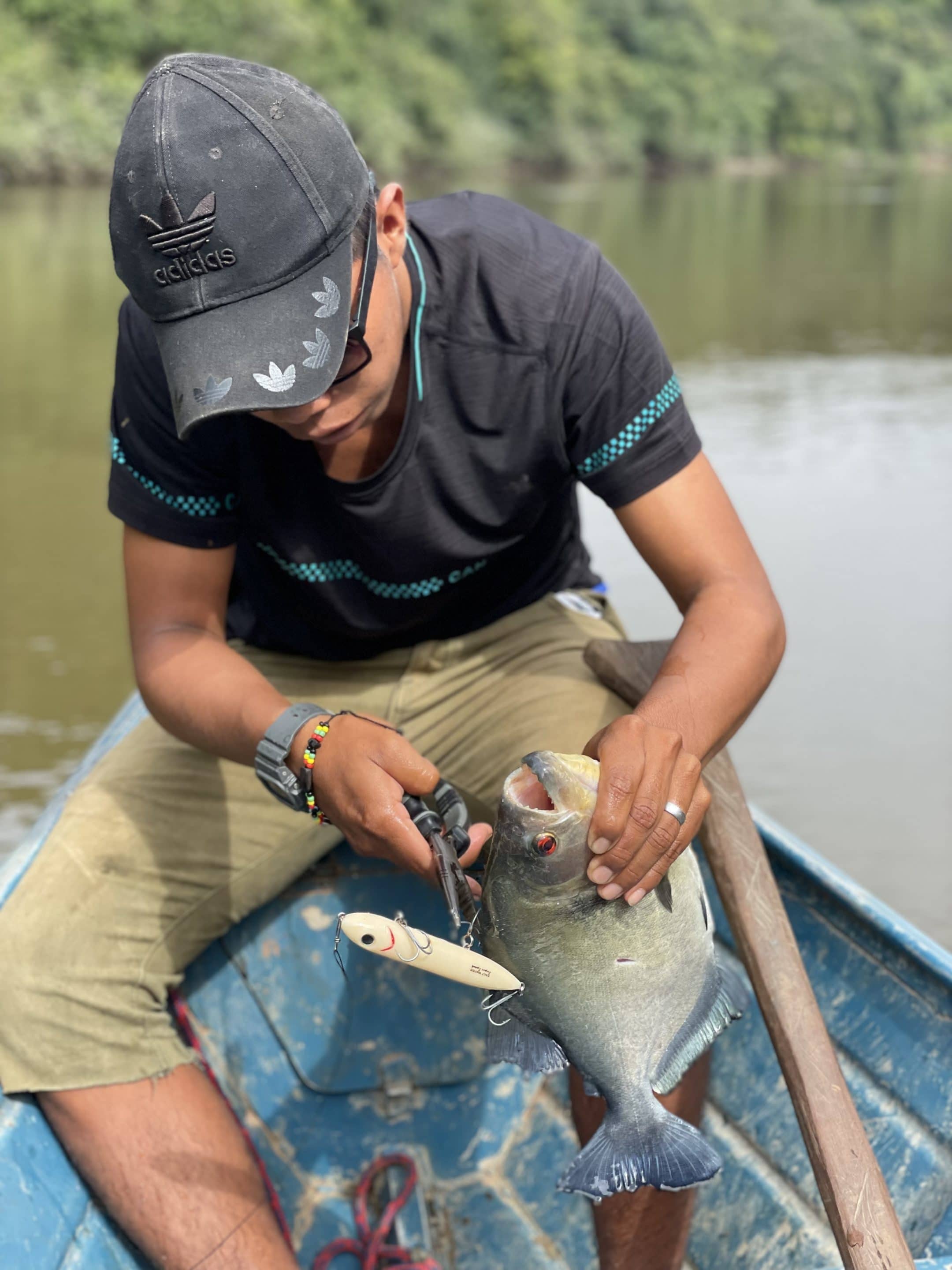

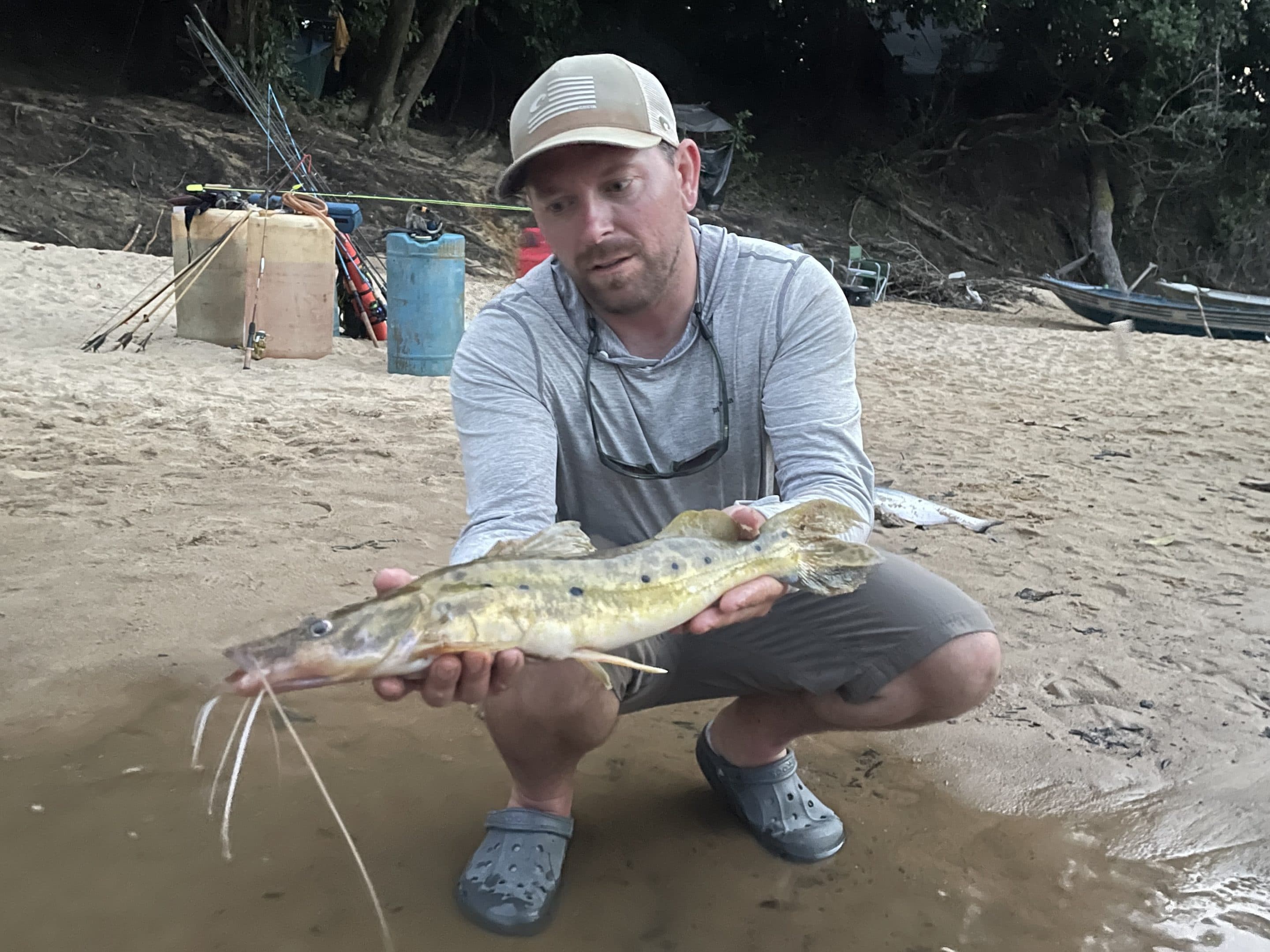
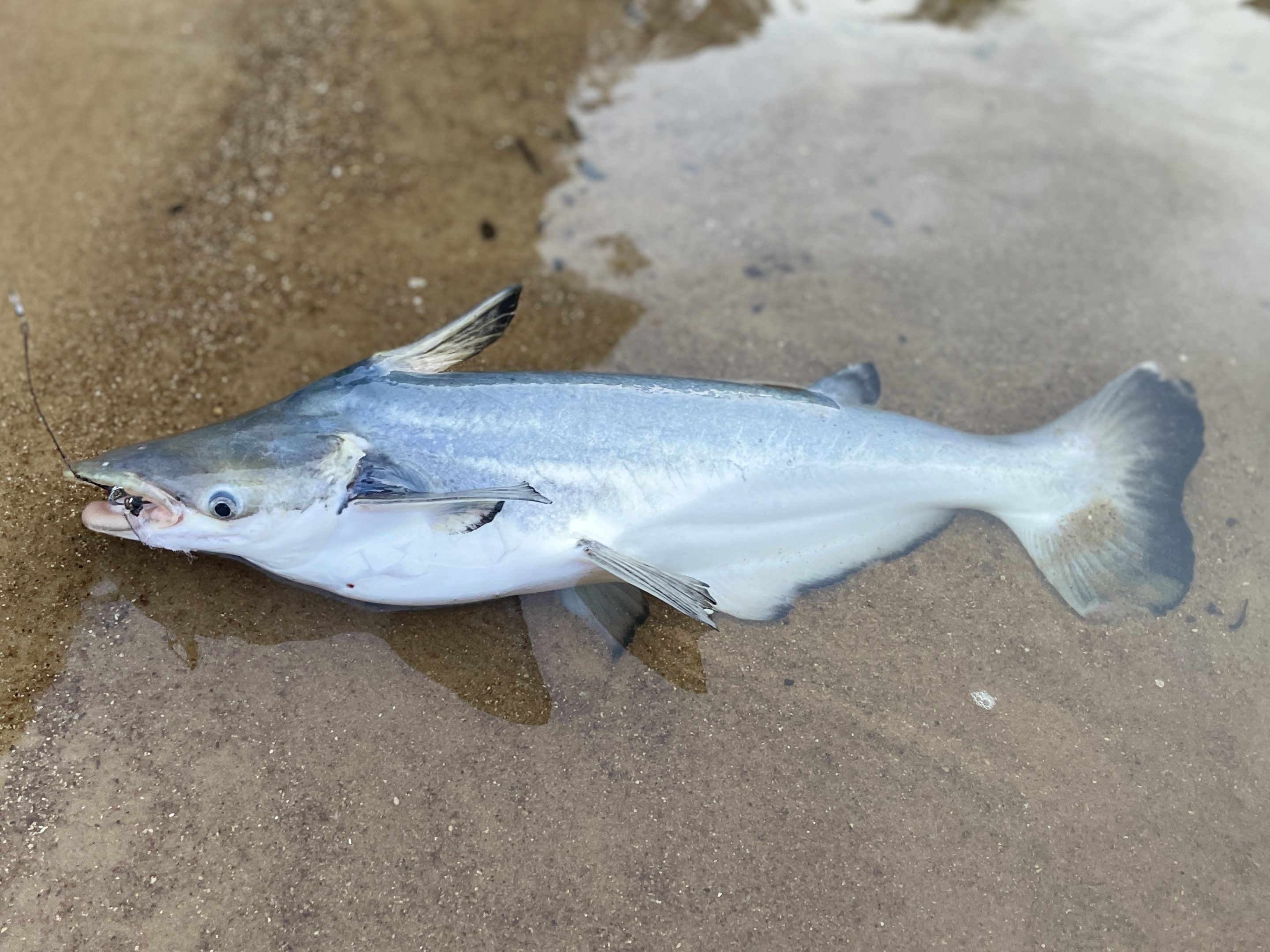
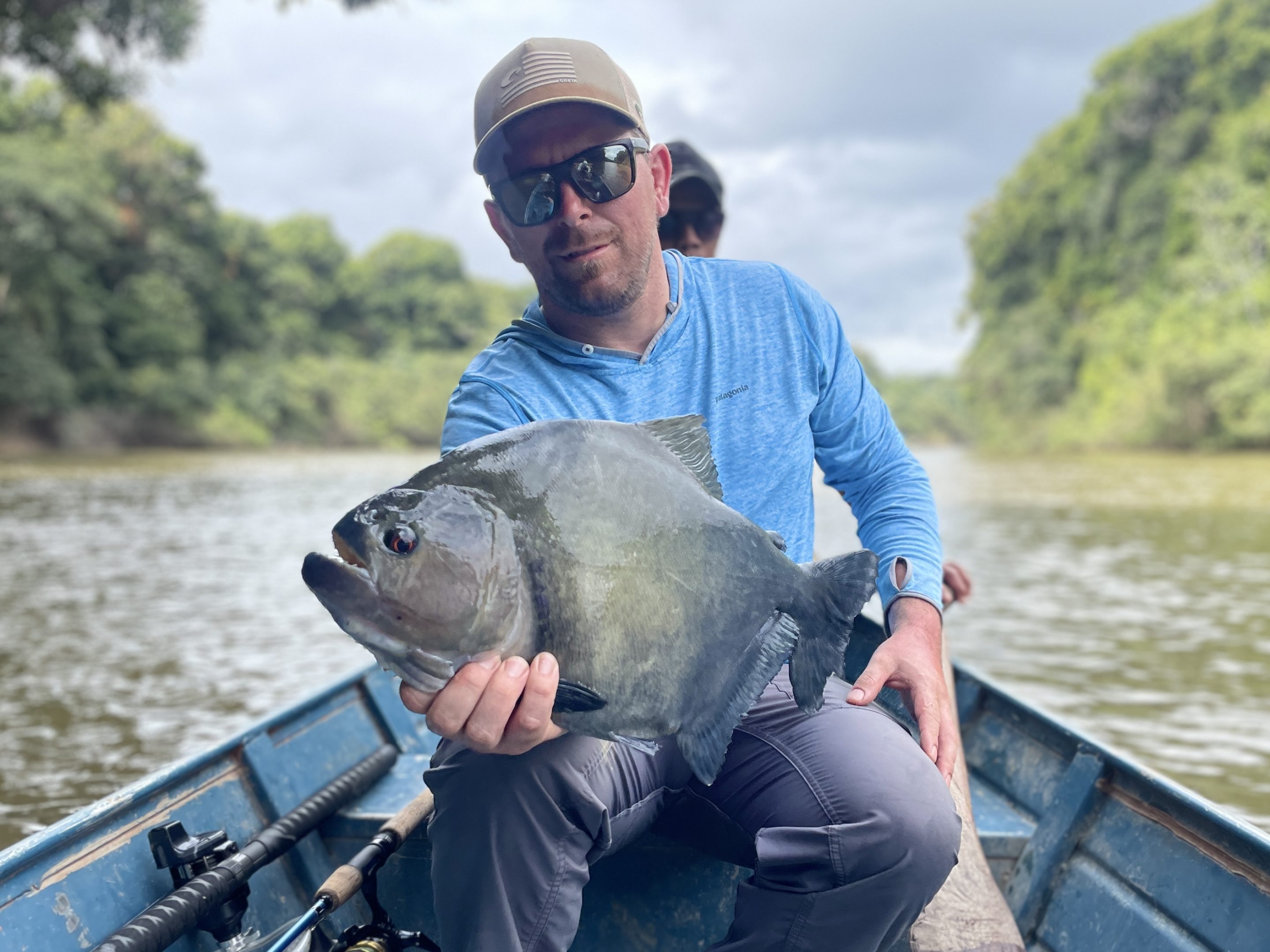
Bush Meat
We lived almost entirely off the land. I used “almost” there because we used flour to batter fish and make bread from time to time. We also used spices to add flavor to the food.
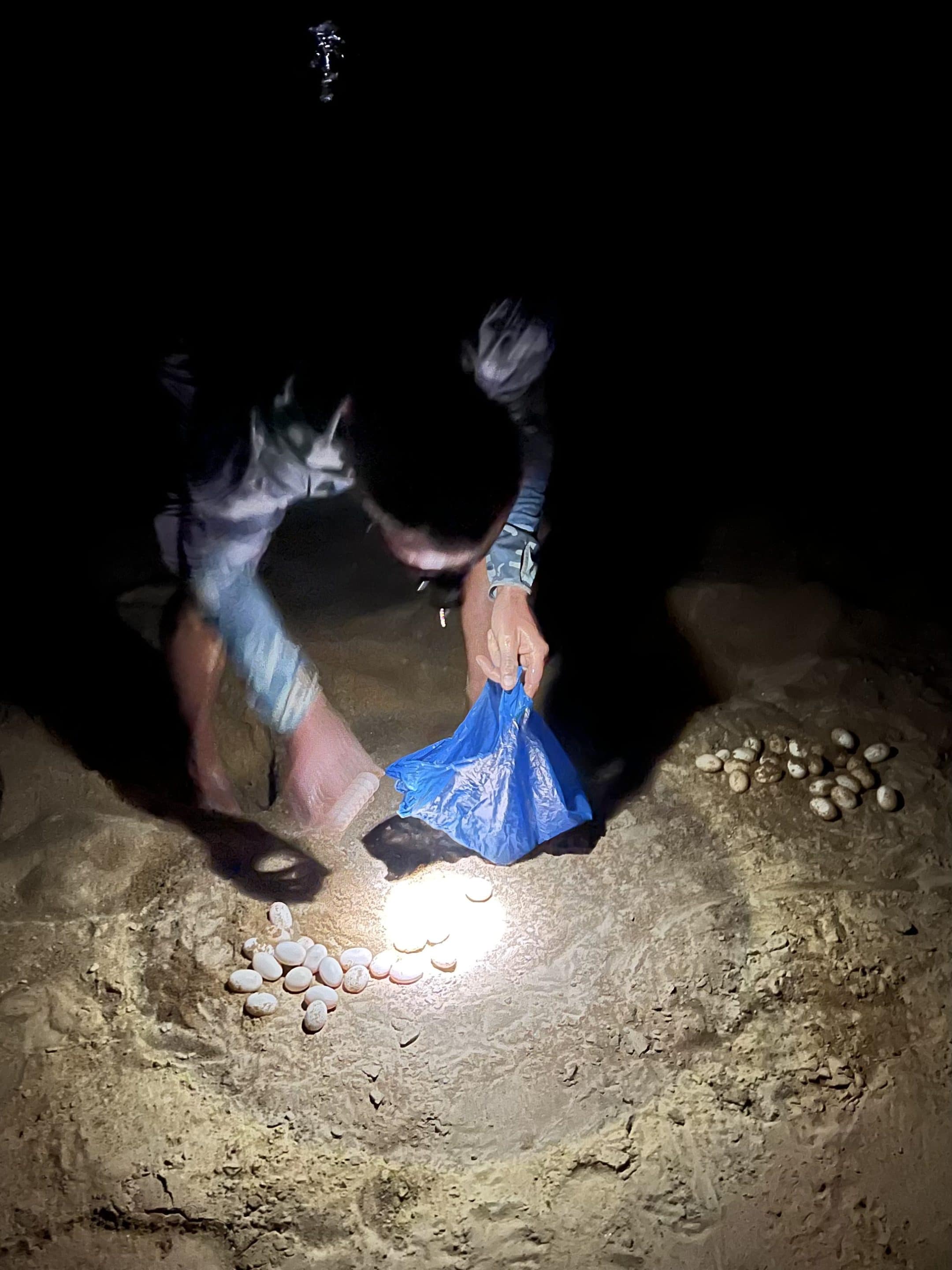
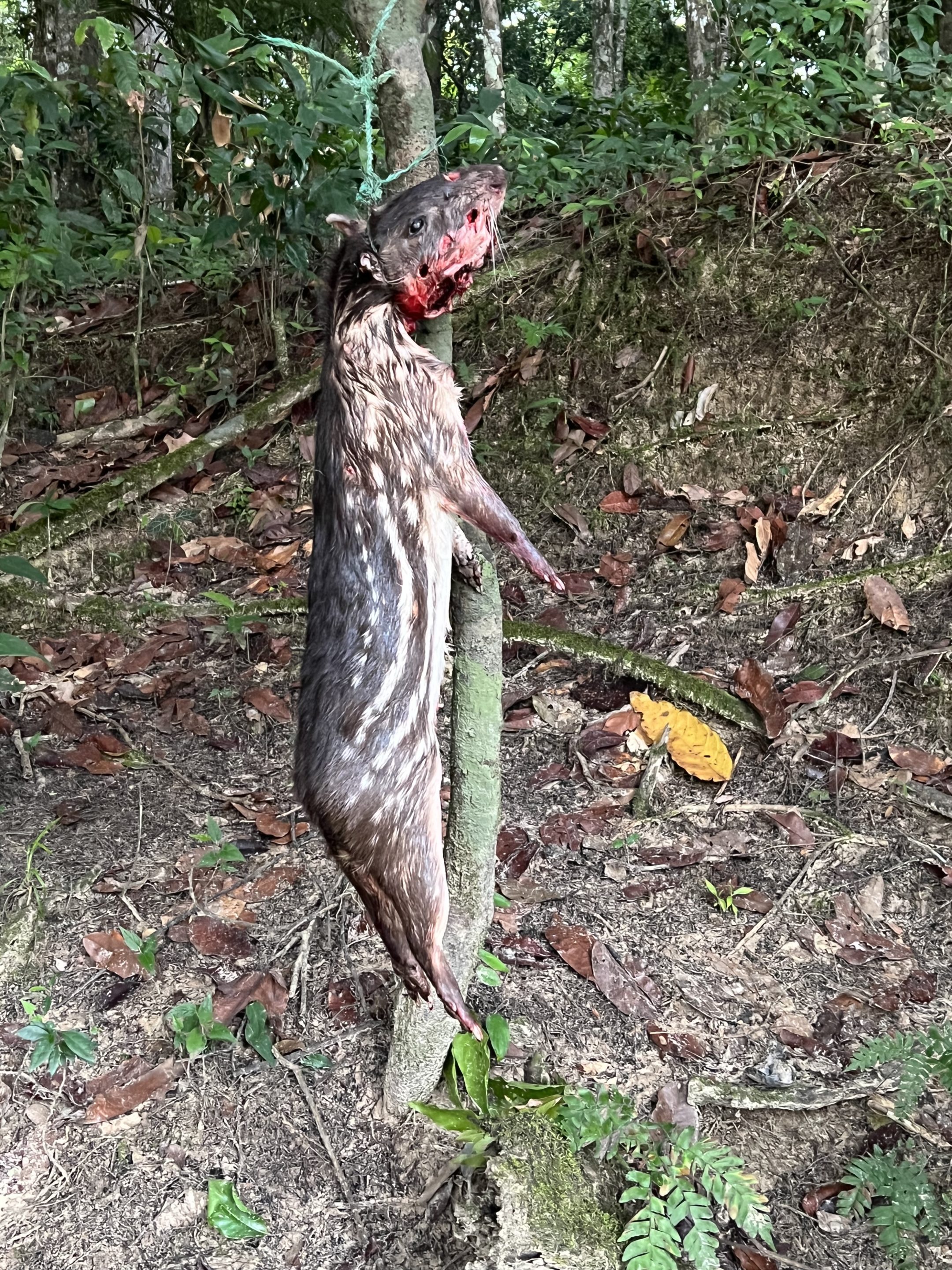
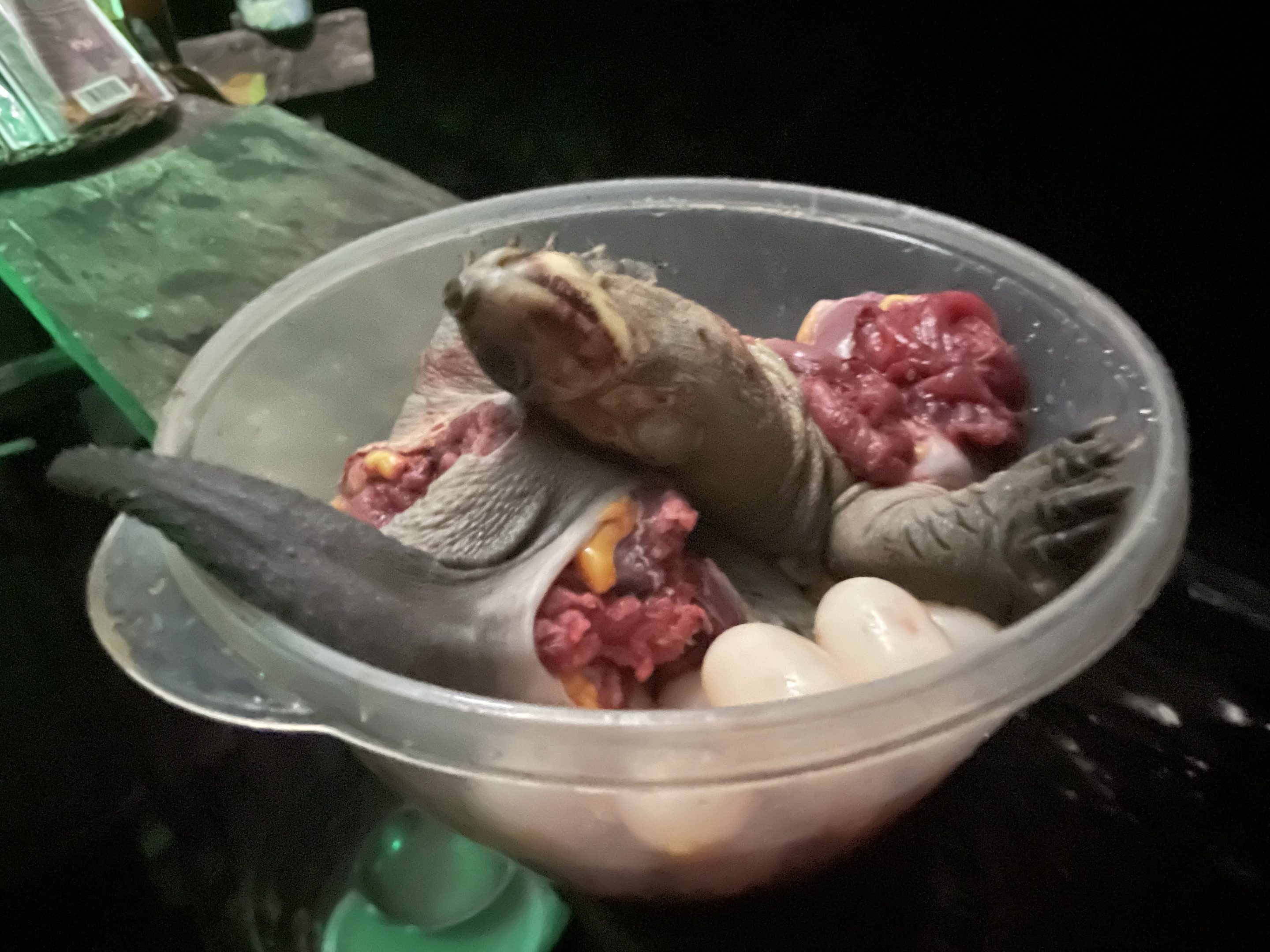
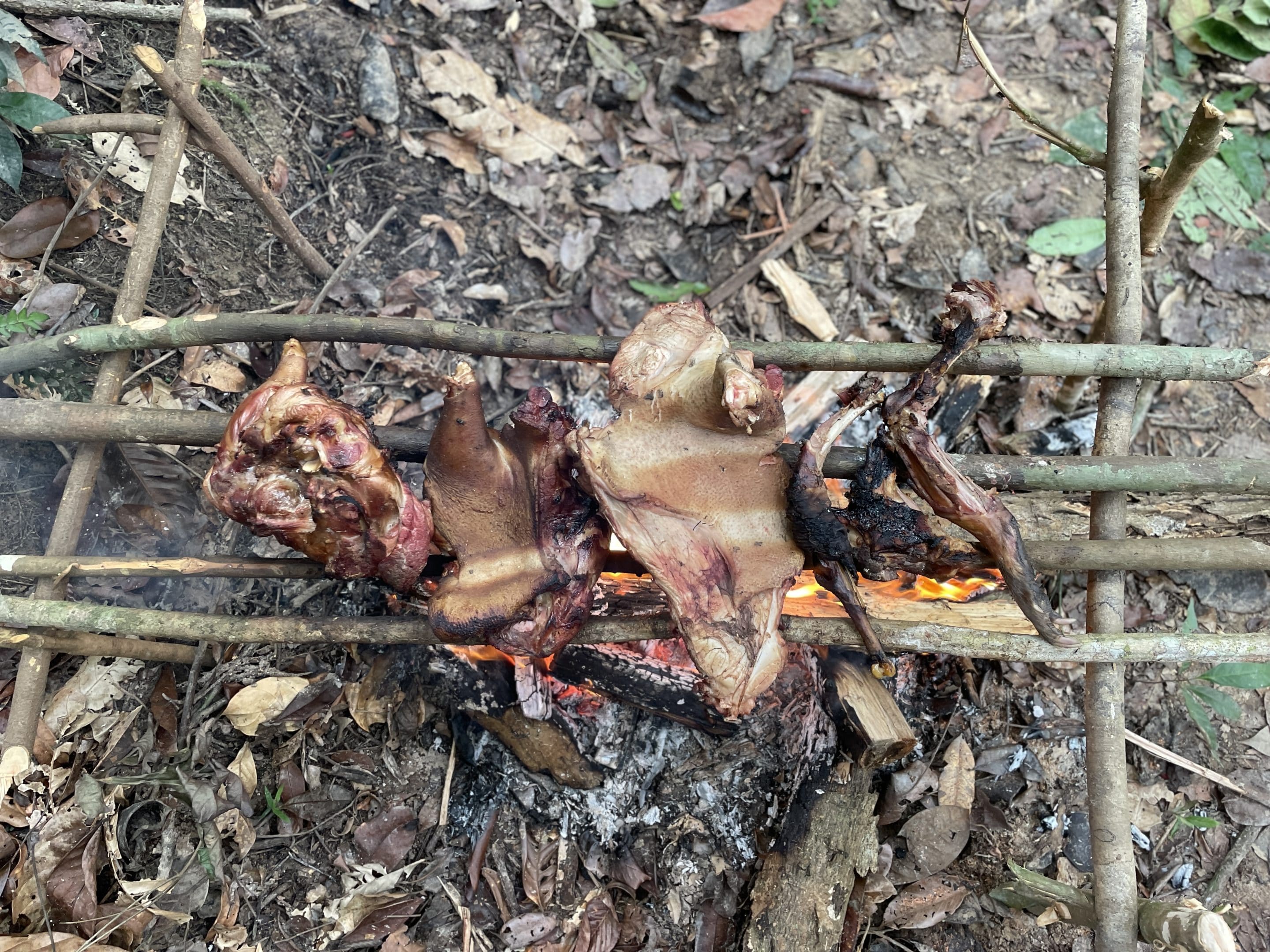
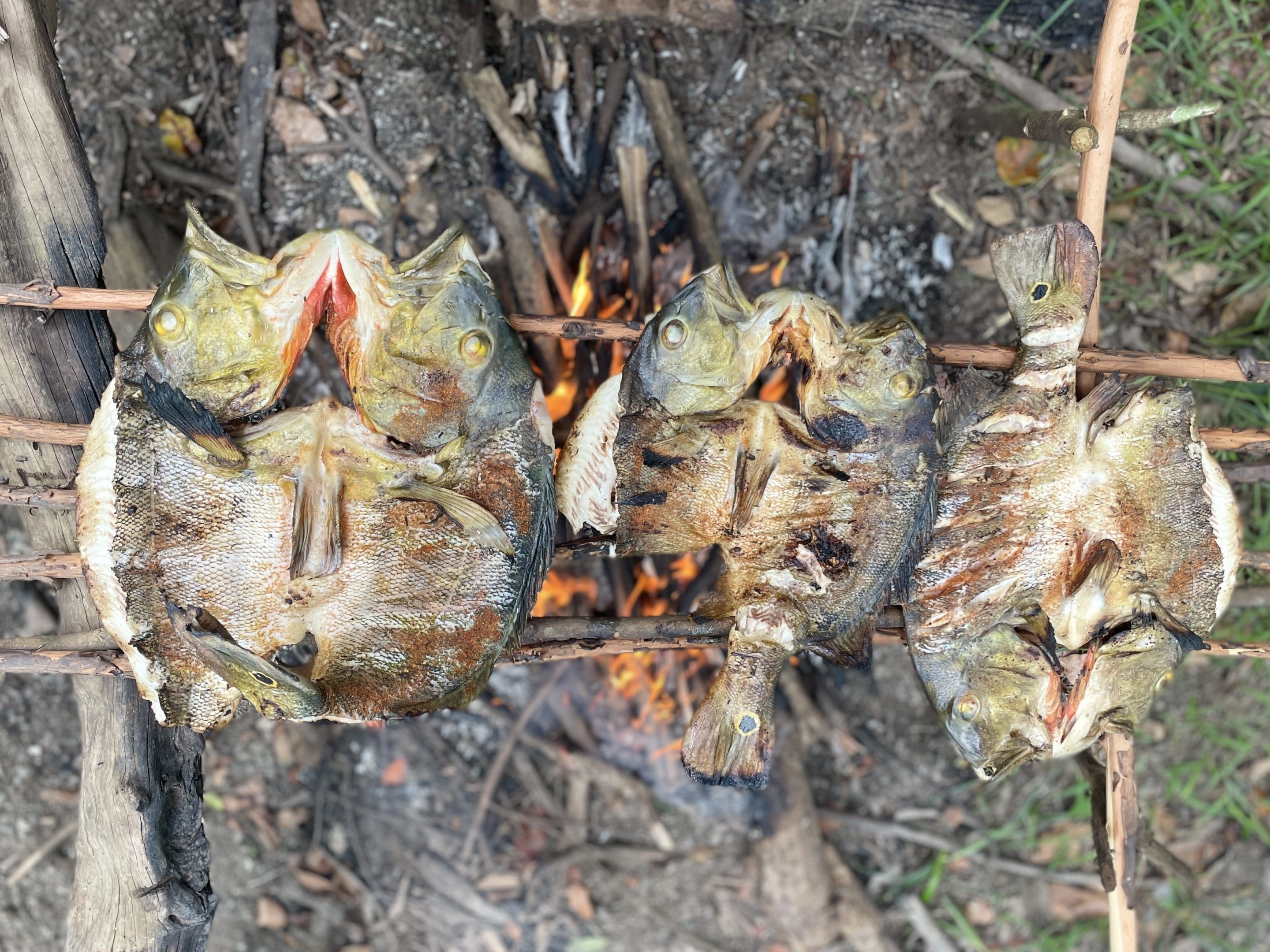
Scenery Etc
Sometimes, I wish we’d do a better job of capturing our surroundings. I can’t tell you how many different birds, monkeys, insects, etc. we saw daily, but such sights were often fleeting so pulling out the rectangle, powering it up, and snapping a shot was rarely an option. Still, here’s a glimpse of our surroundings.
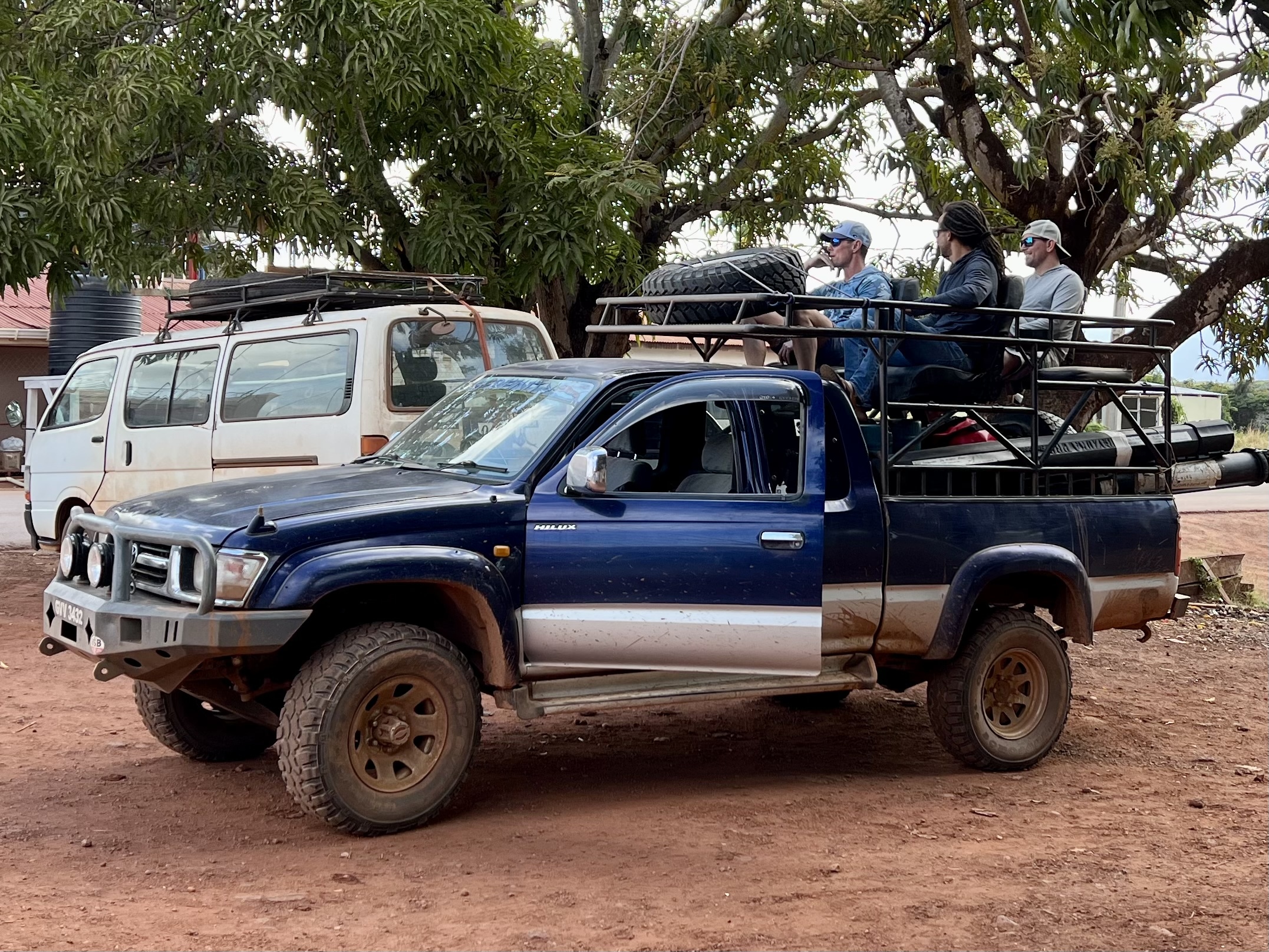


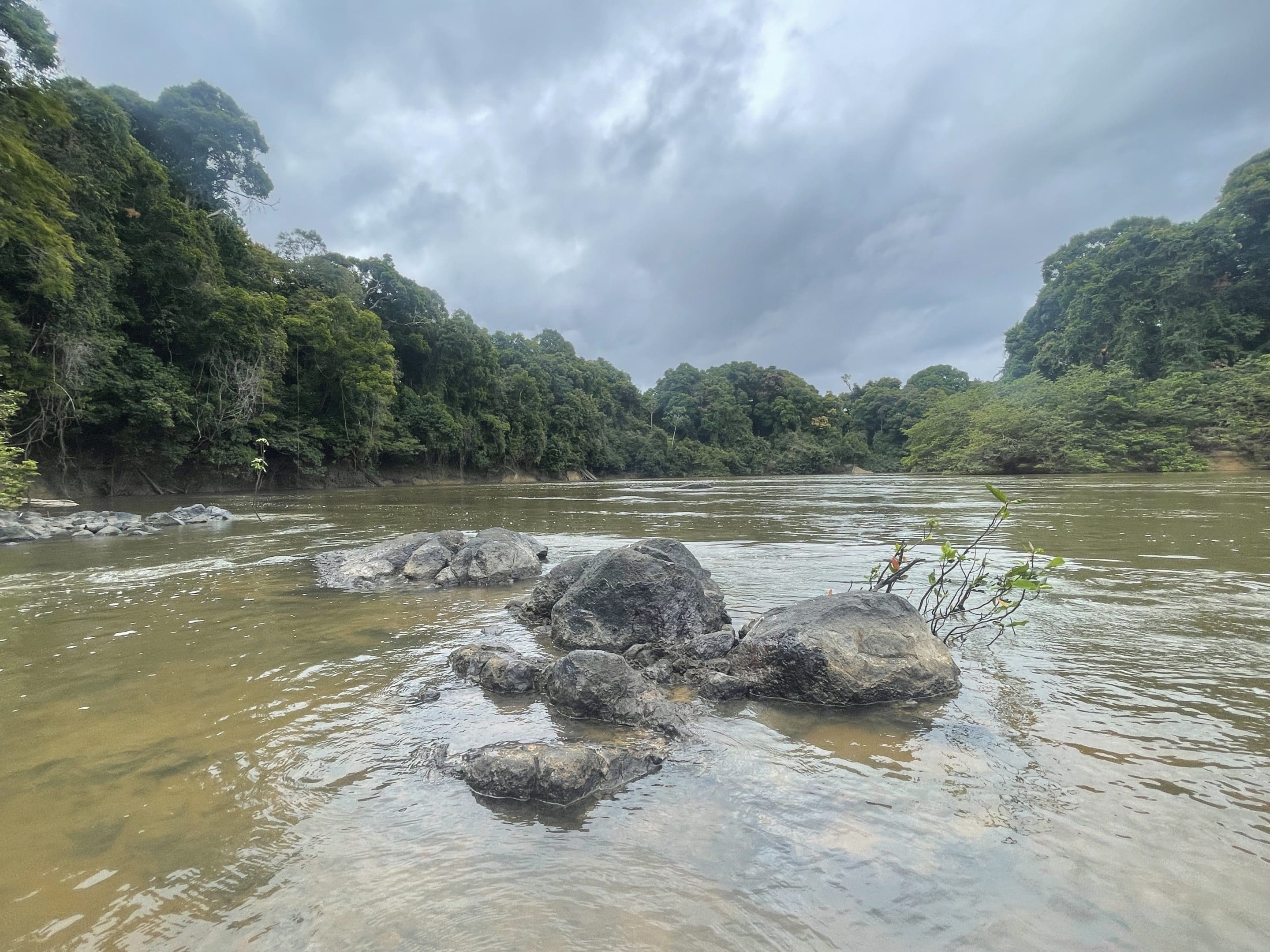

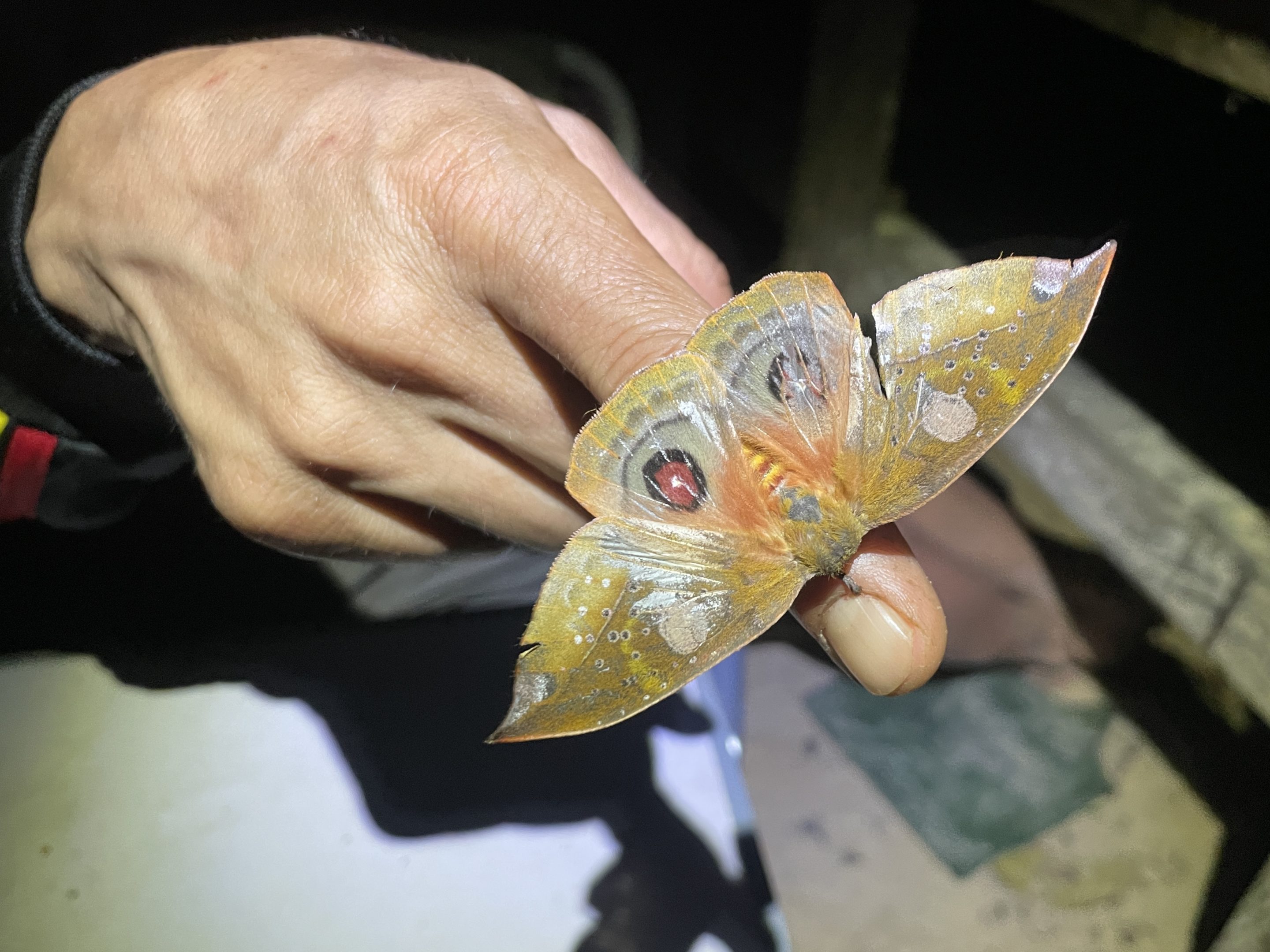


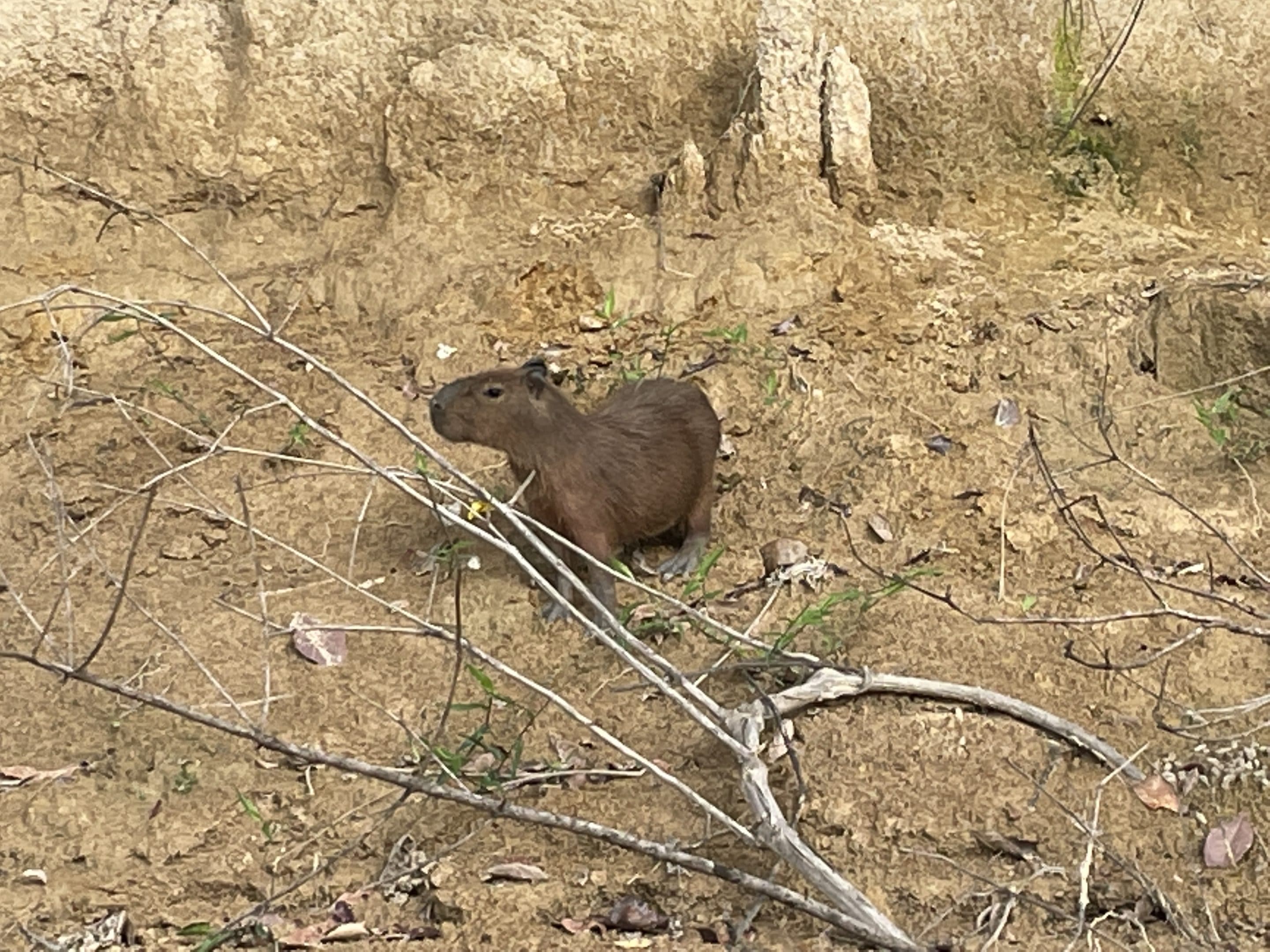

Final Thoughts on our Trip to Guyana
Although we dealt with challenging conditions, everyone caught numerous, trophy fish. Like I mentioned earlier, this is a bountiful paradise that always rewards you. We were never at risk of going hungry – every meal was our responsibility to obtain and more times than not, it took mere minutes to secure sustenance. Departing the jungle was bittersweet. Bitter because going back to the WEIRD world and all its problems didn’t inspire much to get excited about. Sweet because we all missed our families and were looking forward to seeing them again.
If you’re interested in learning more about our trip. Don’t hesitate to reach out. Be prepared for a long conversation. You can also contact Larry Jones via this website for more details.
